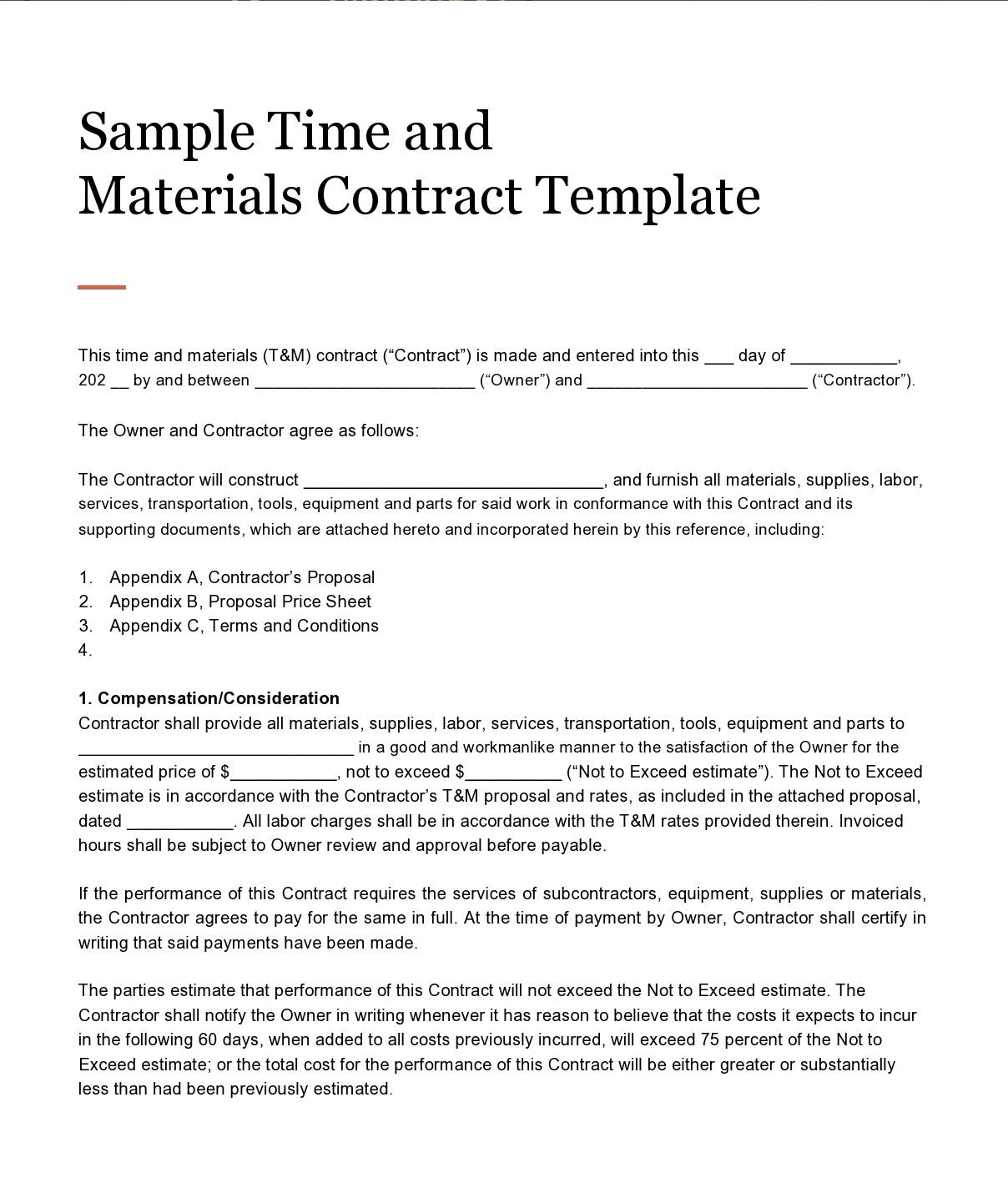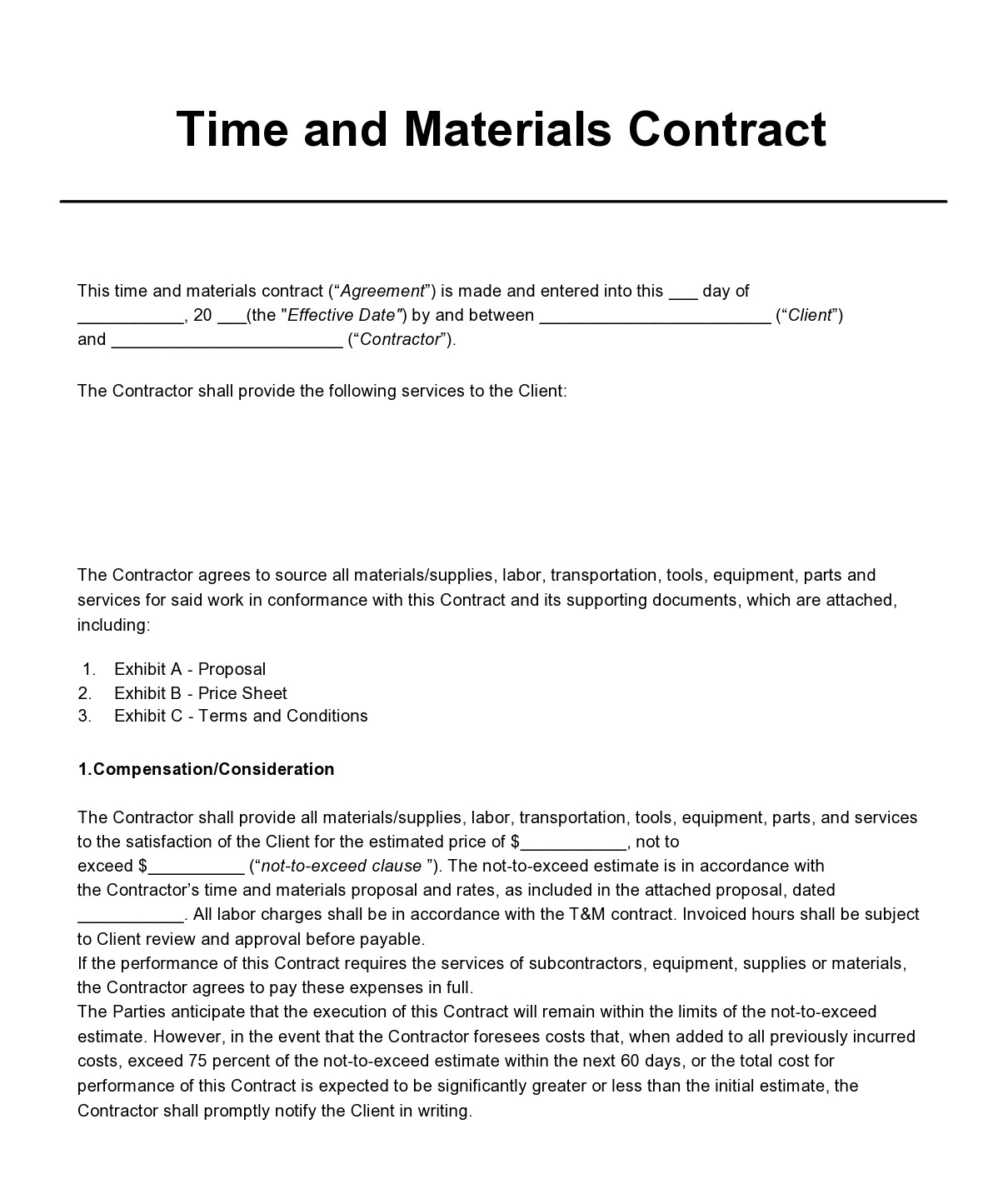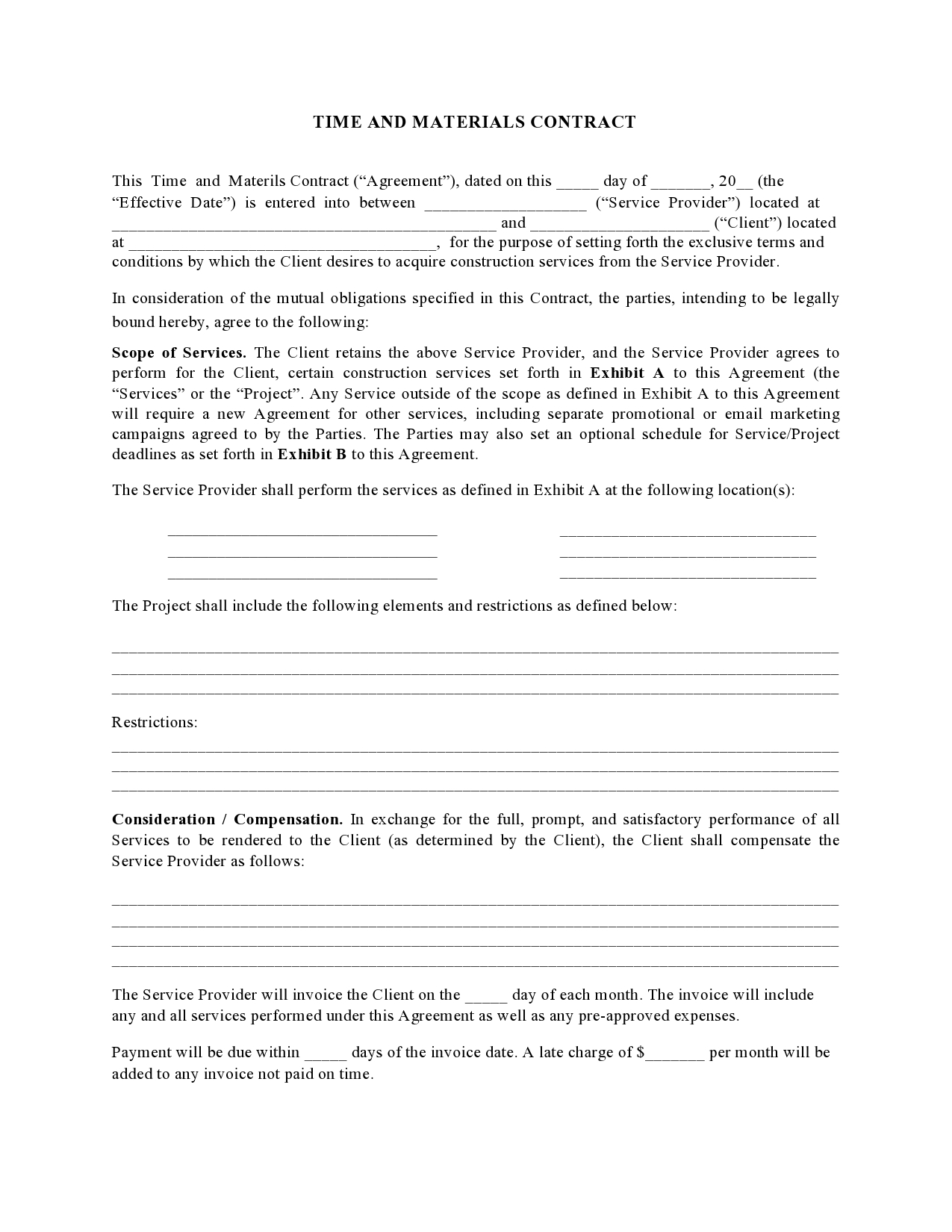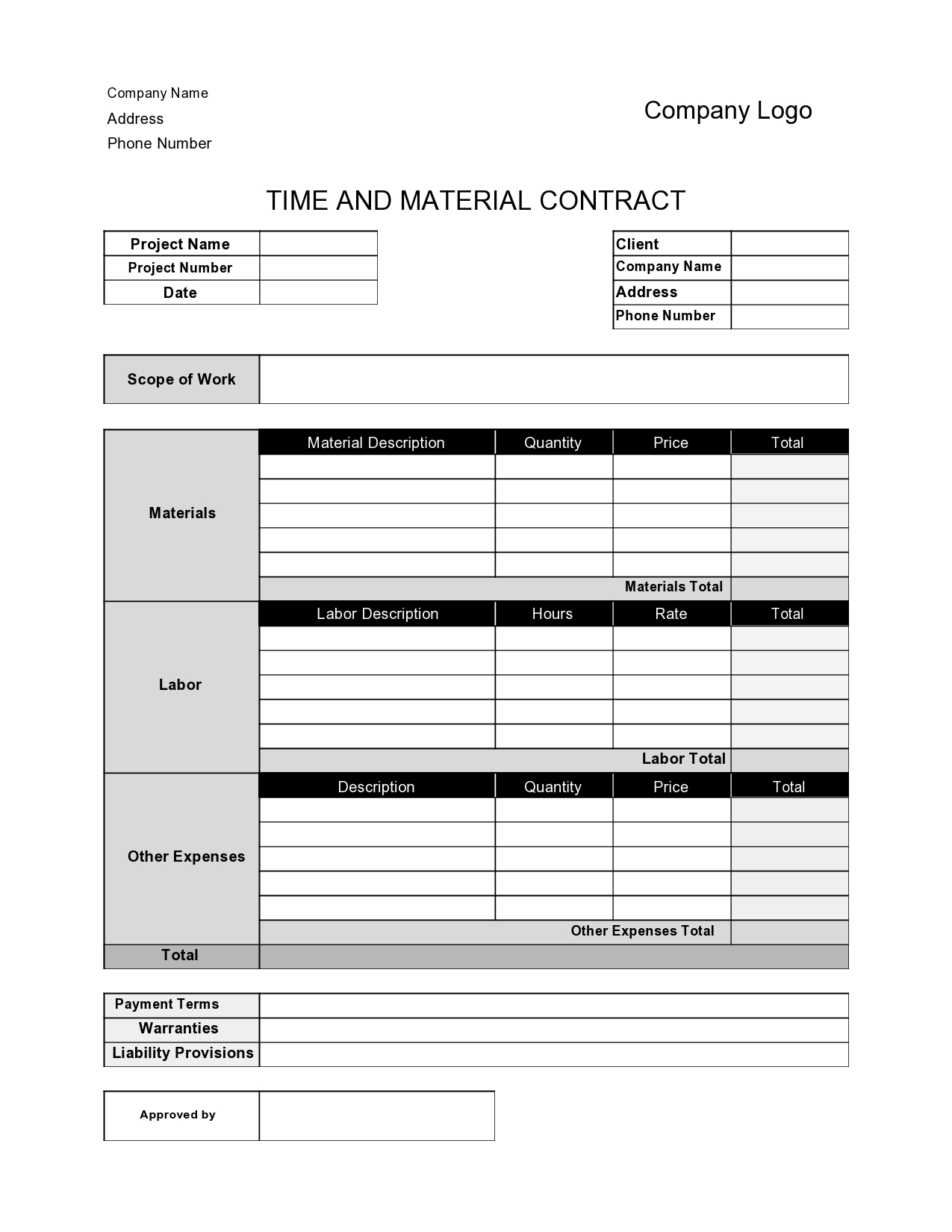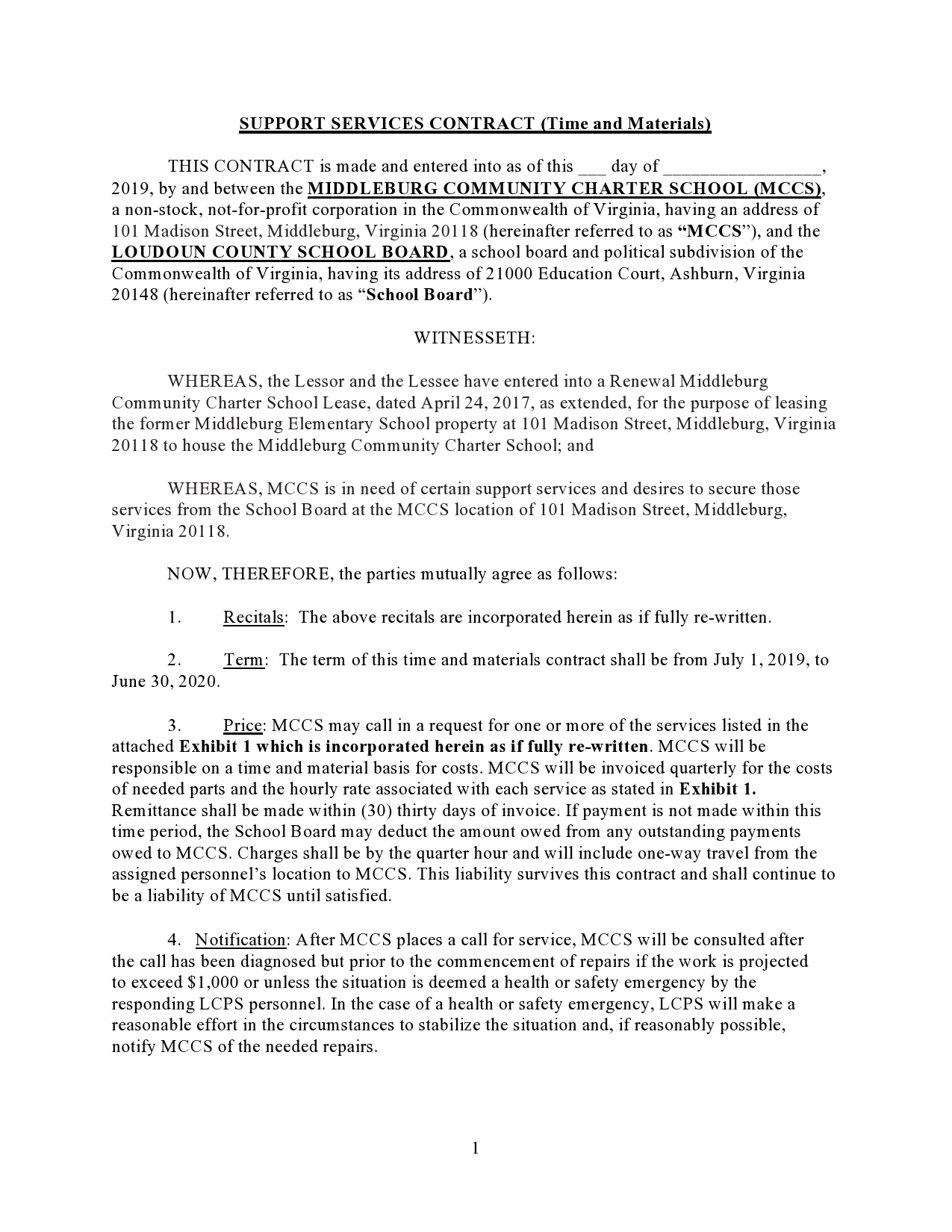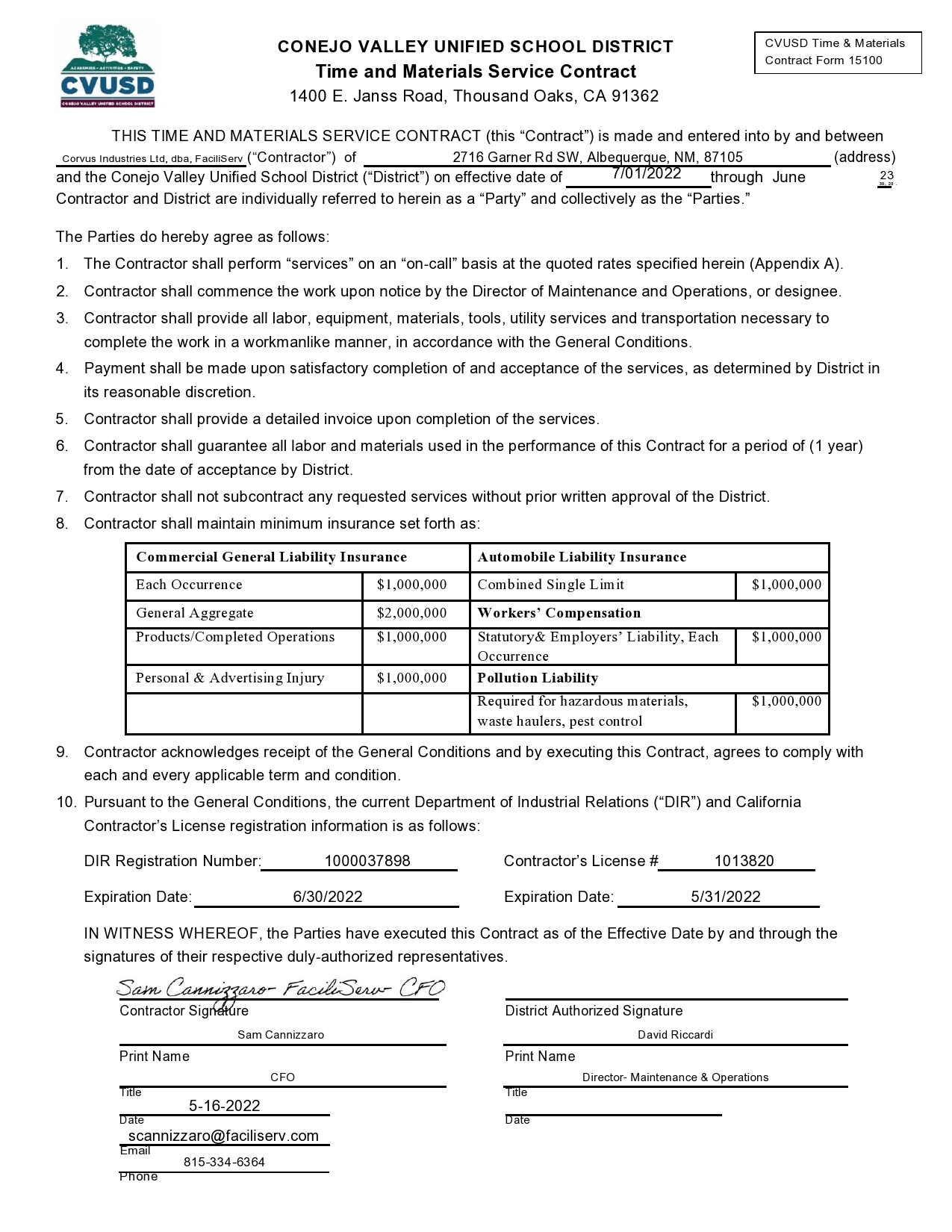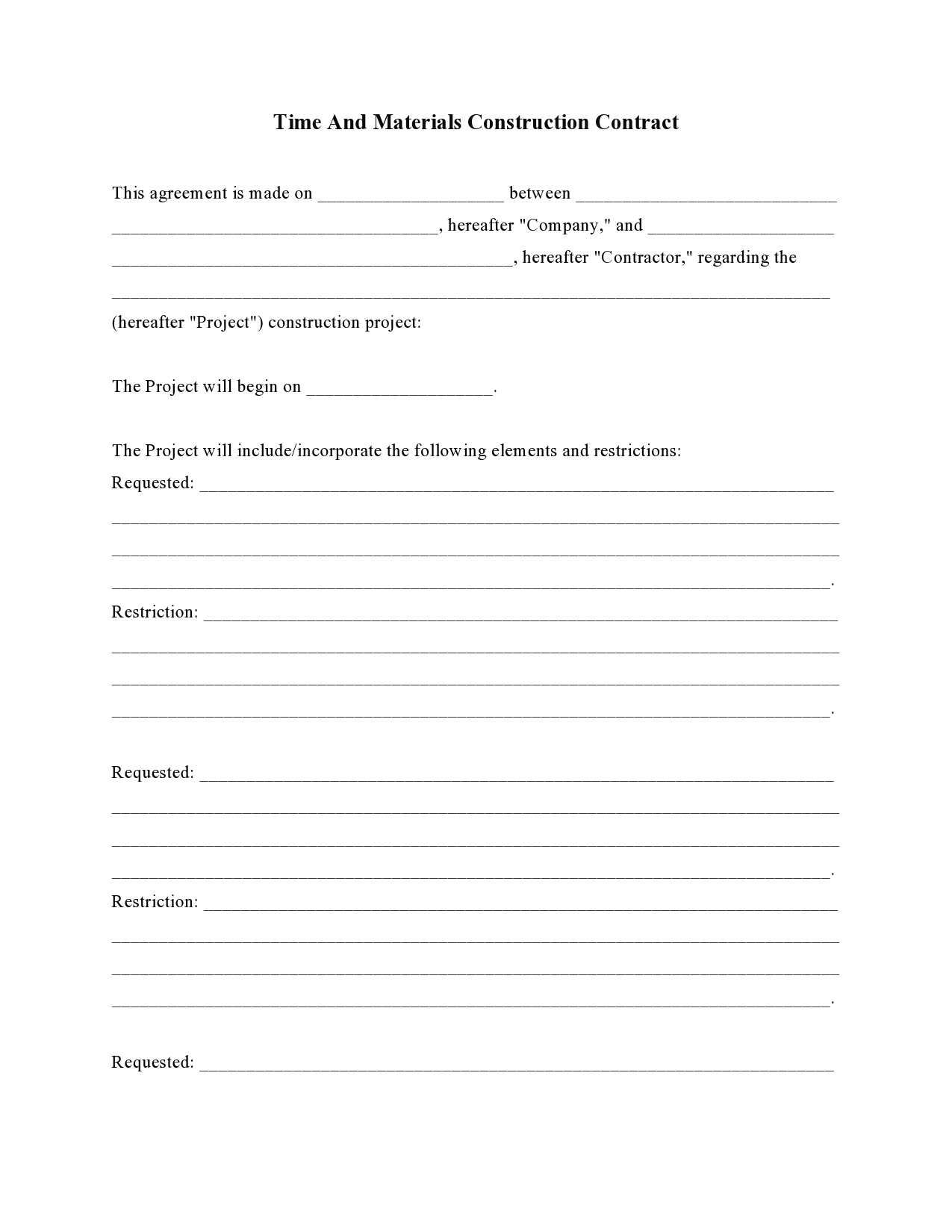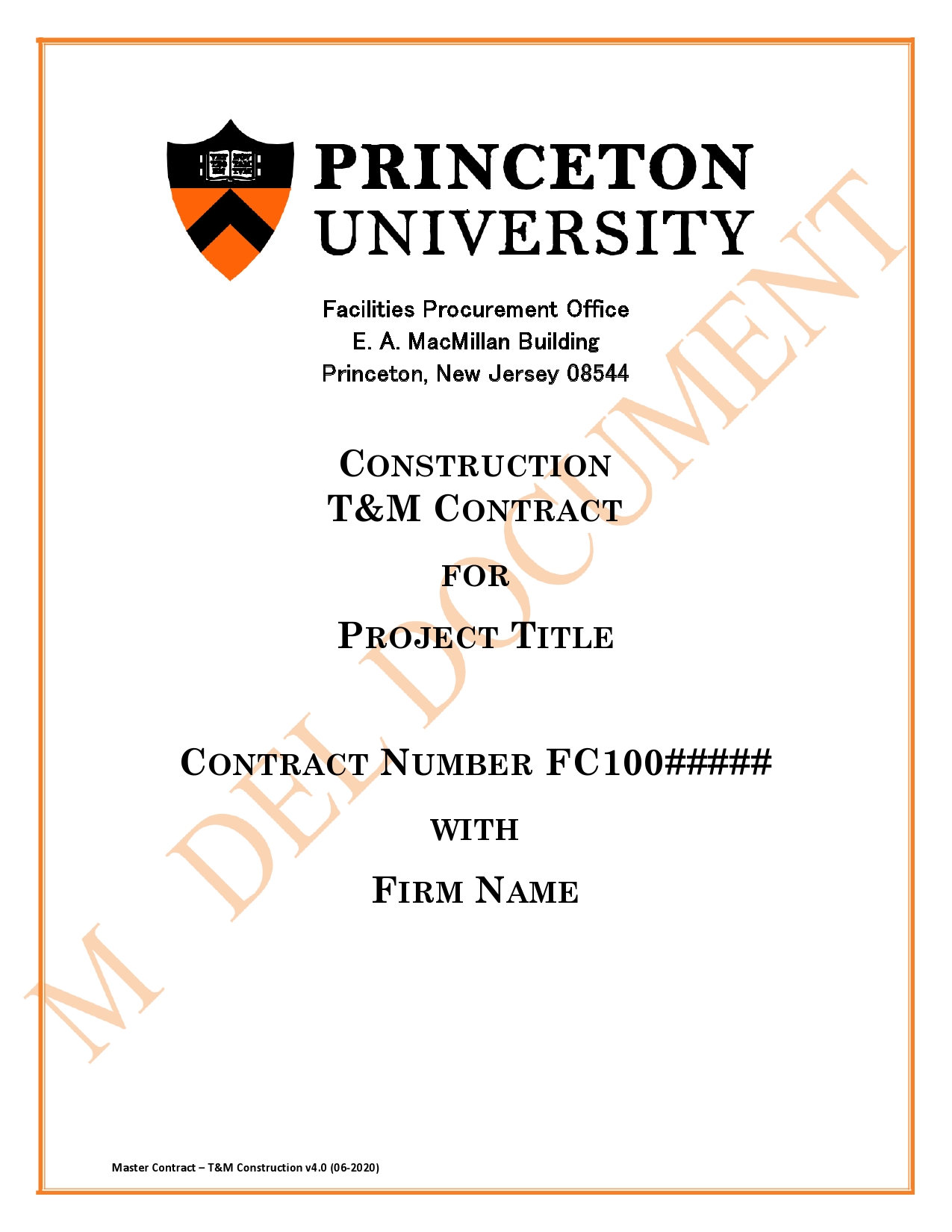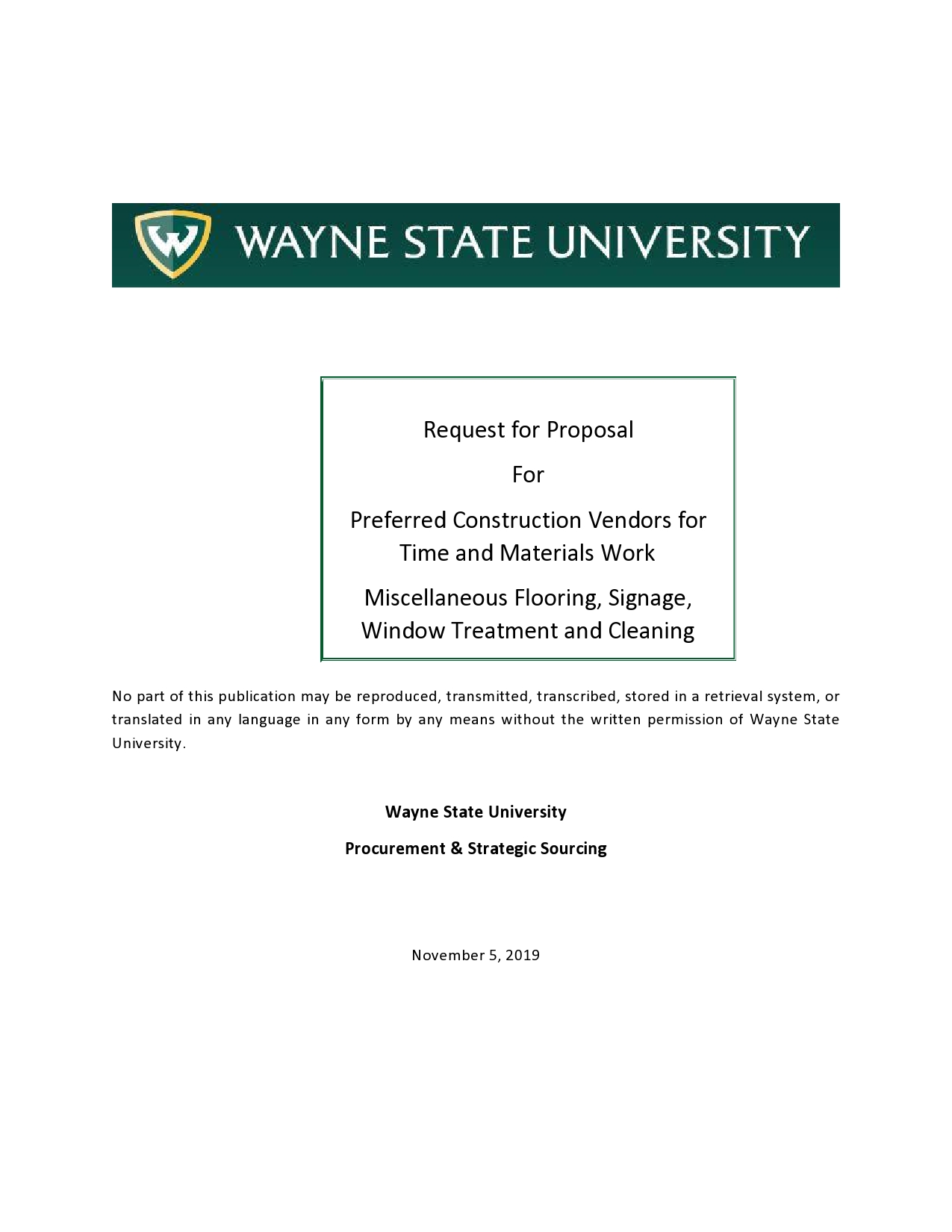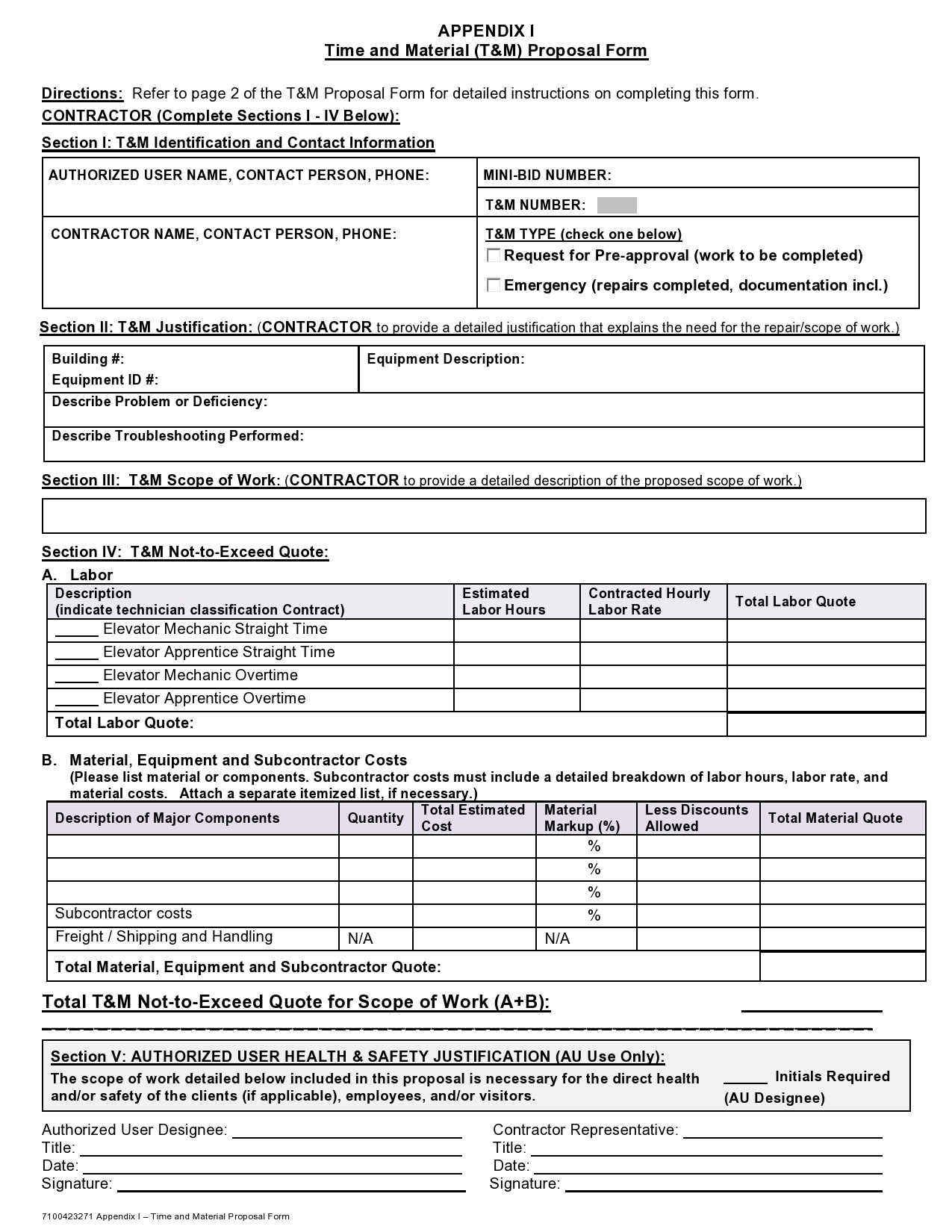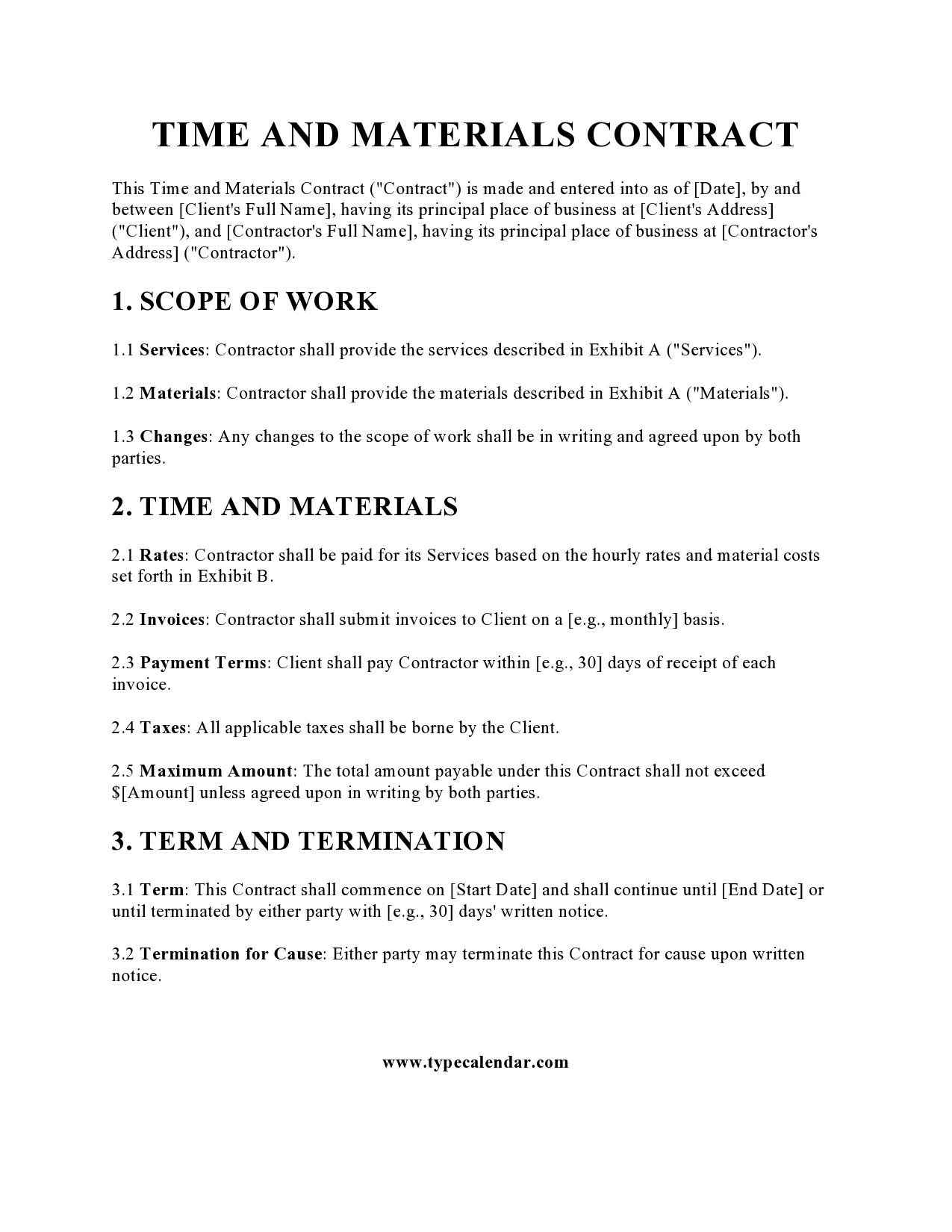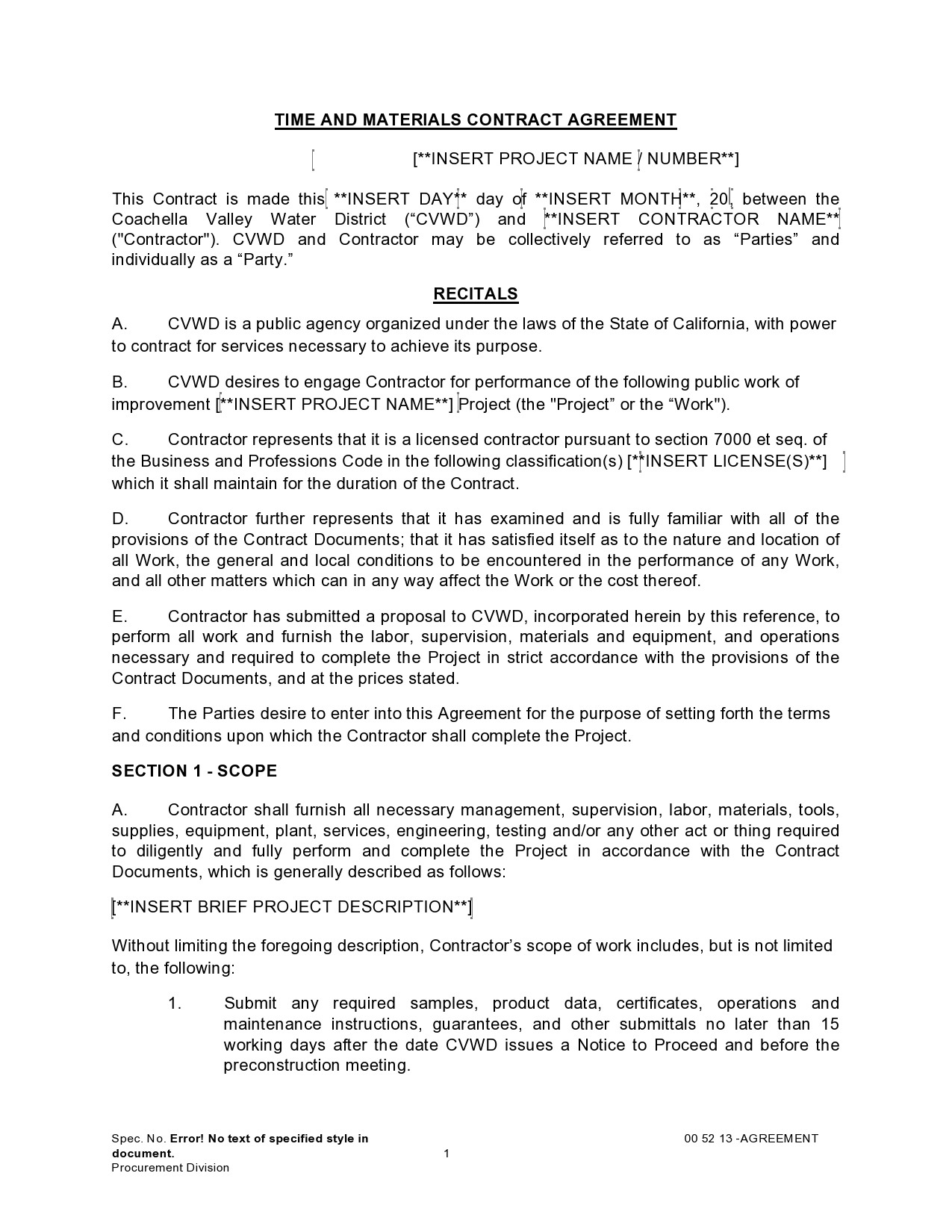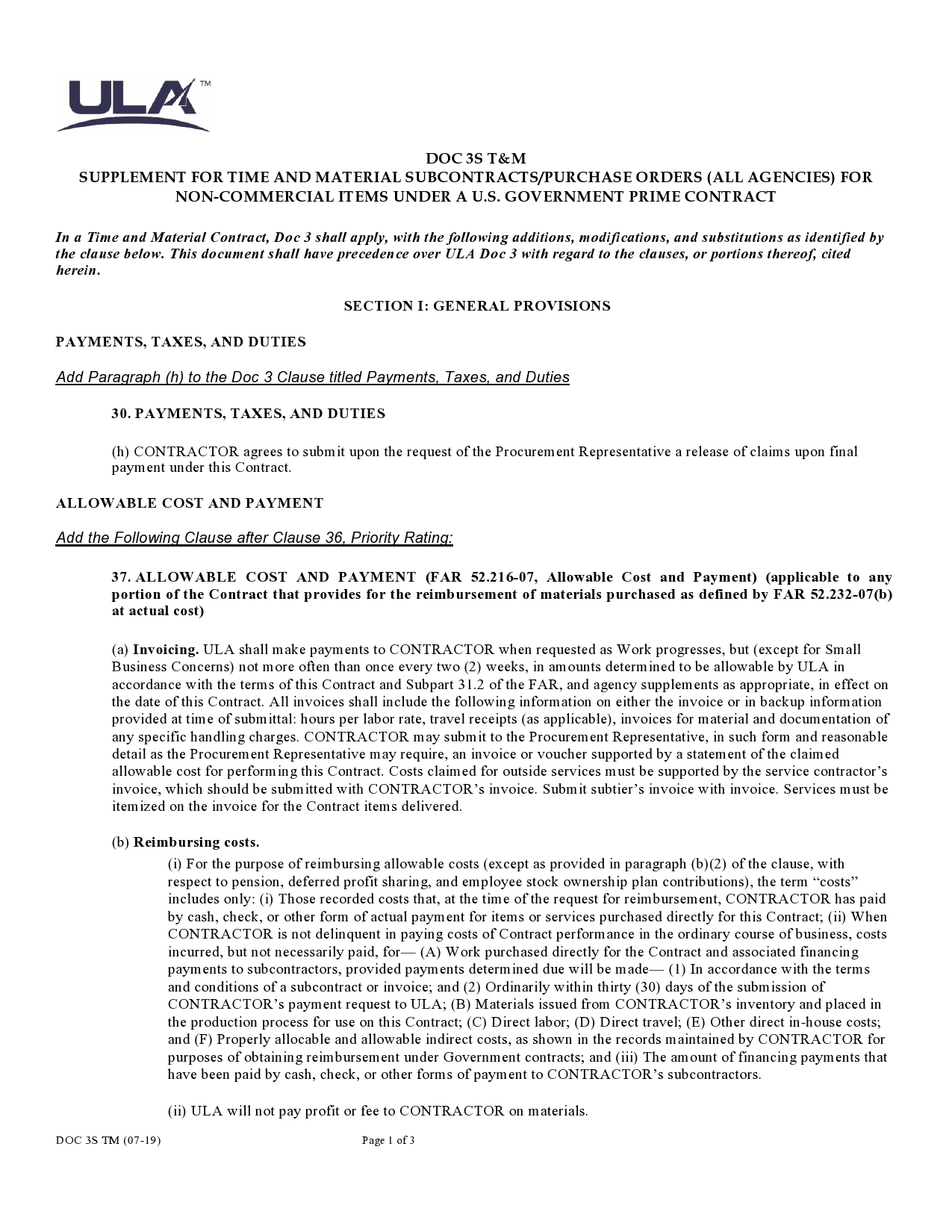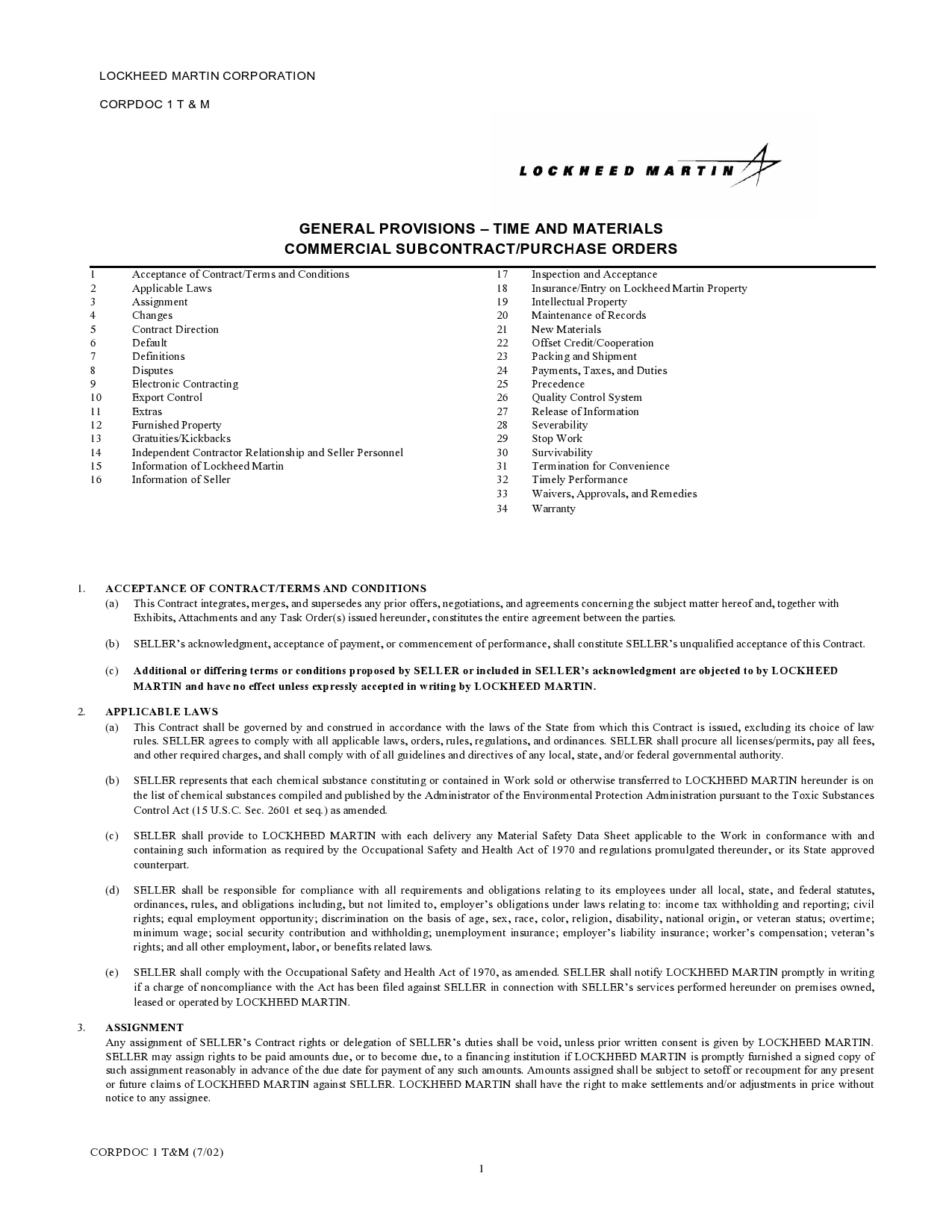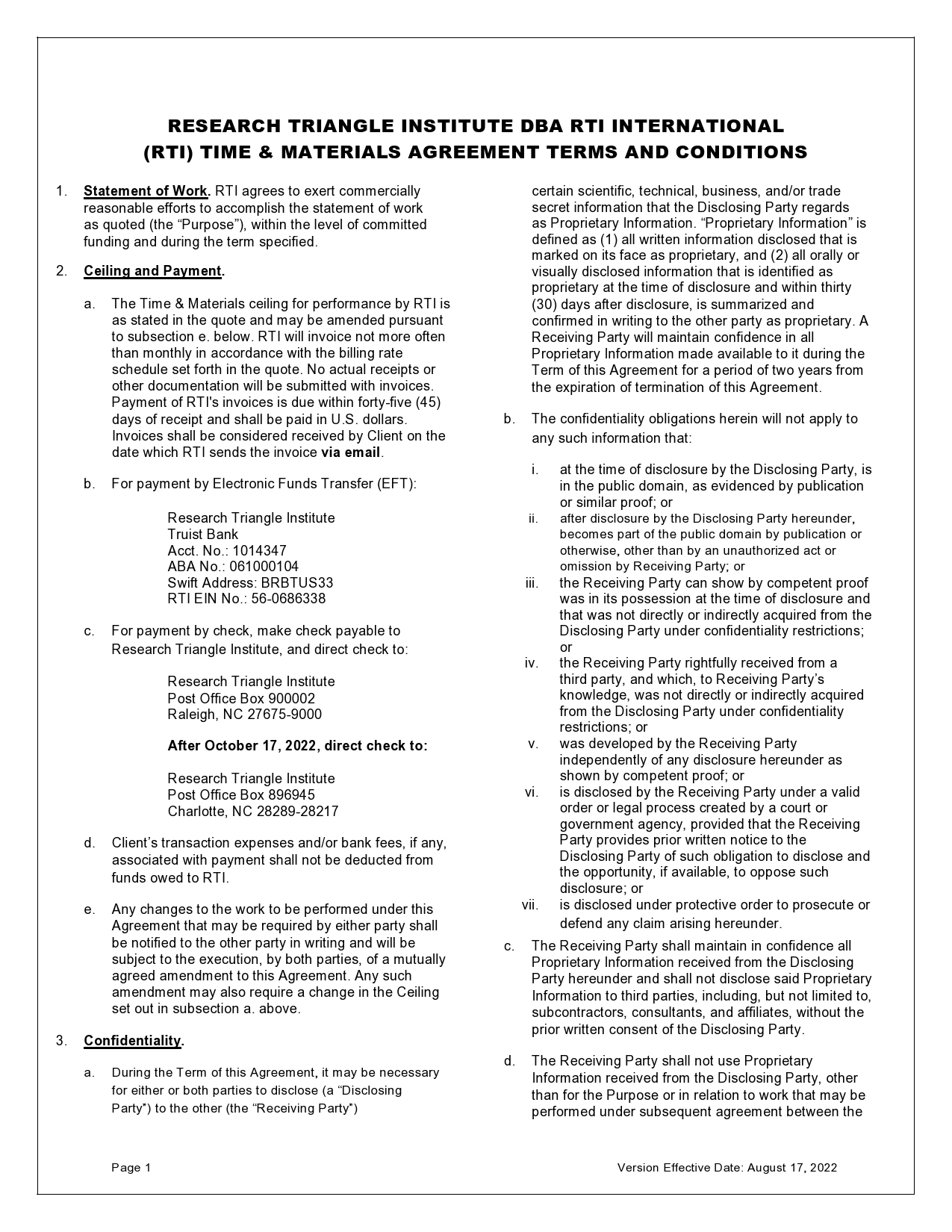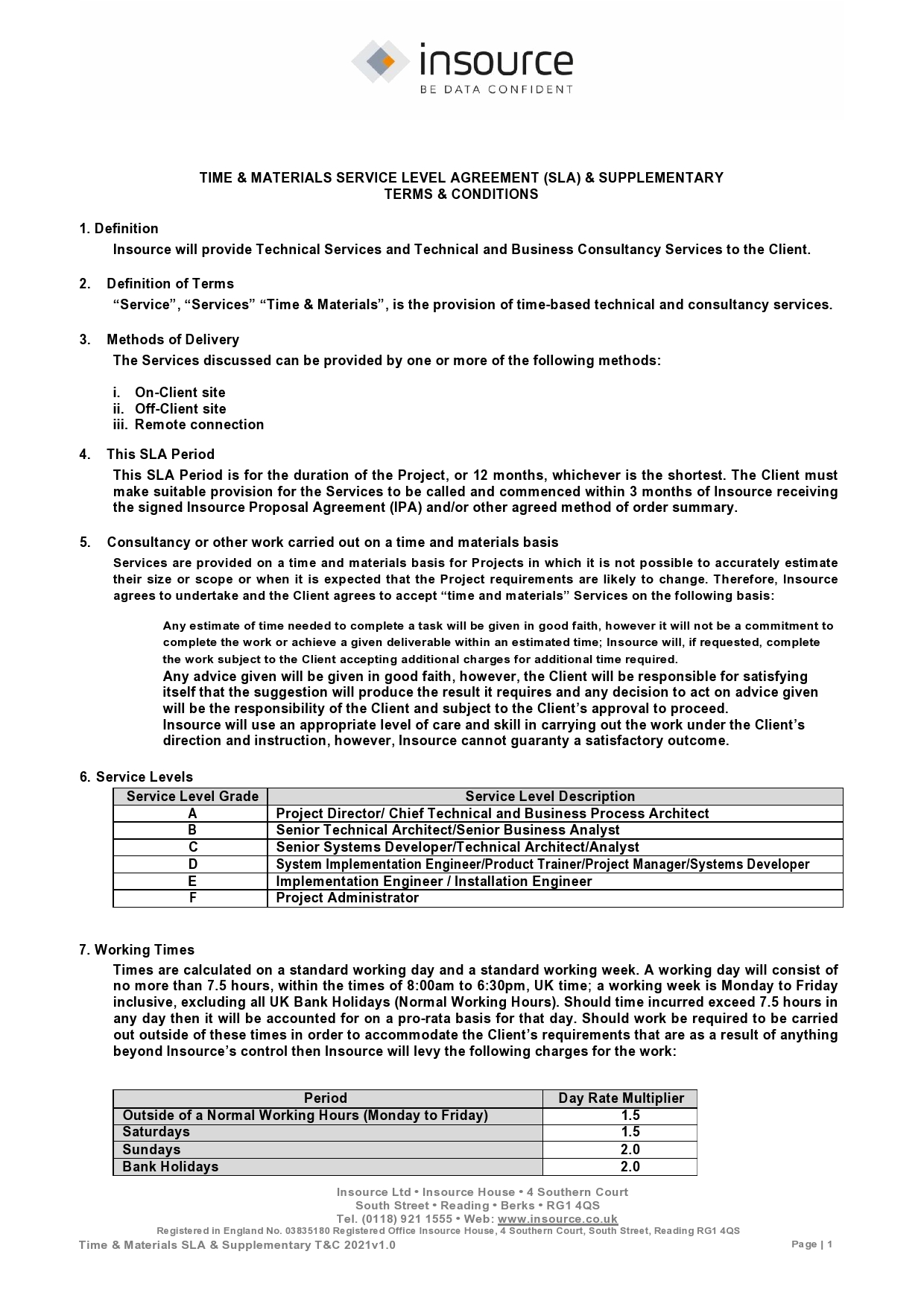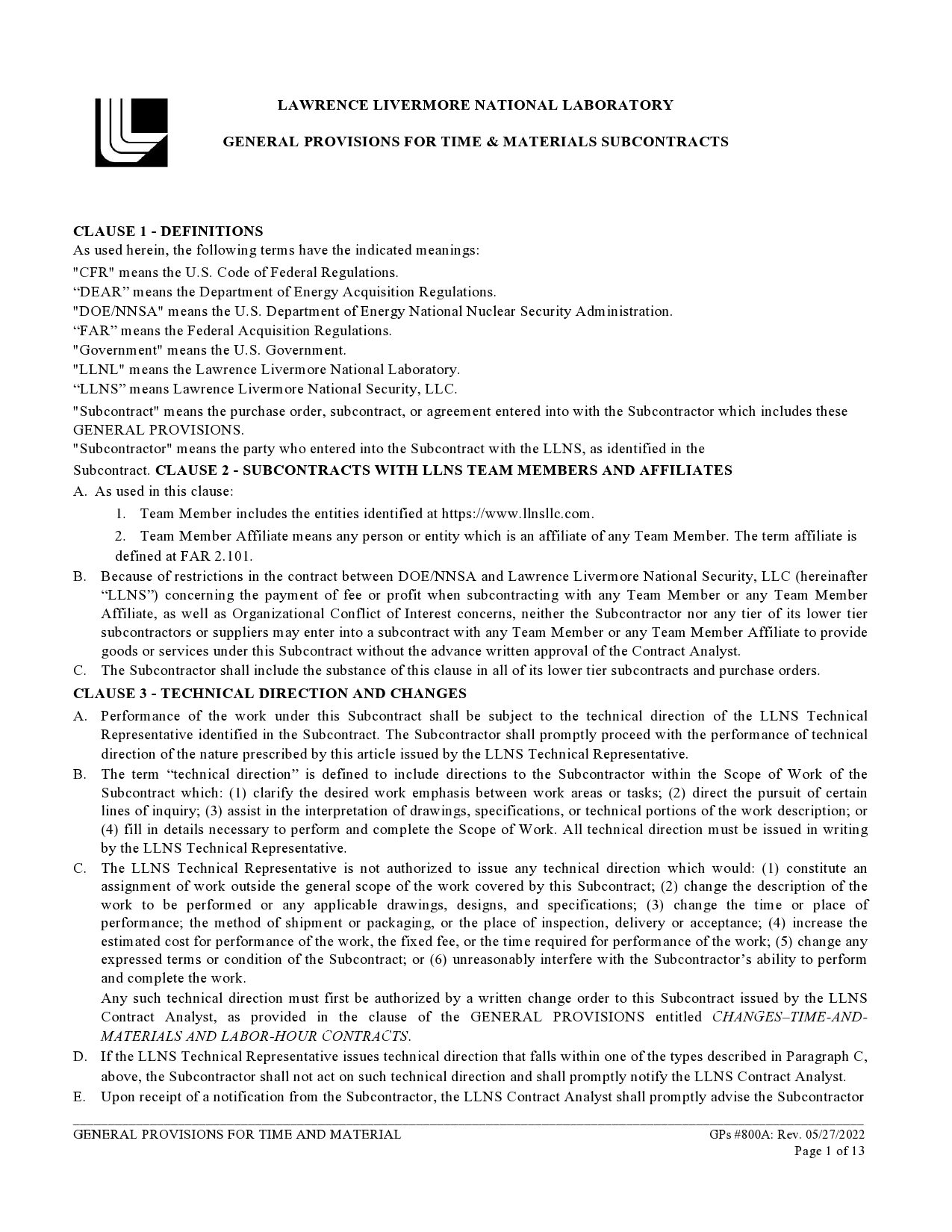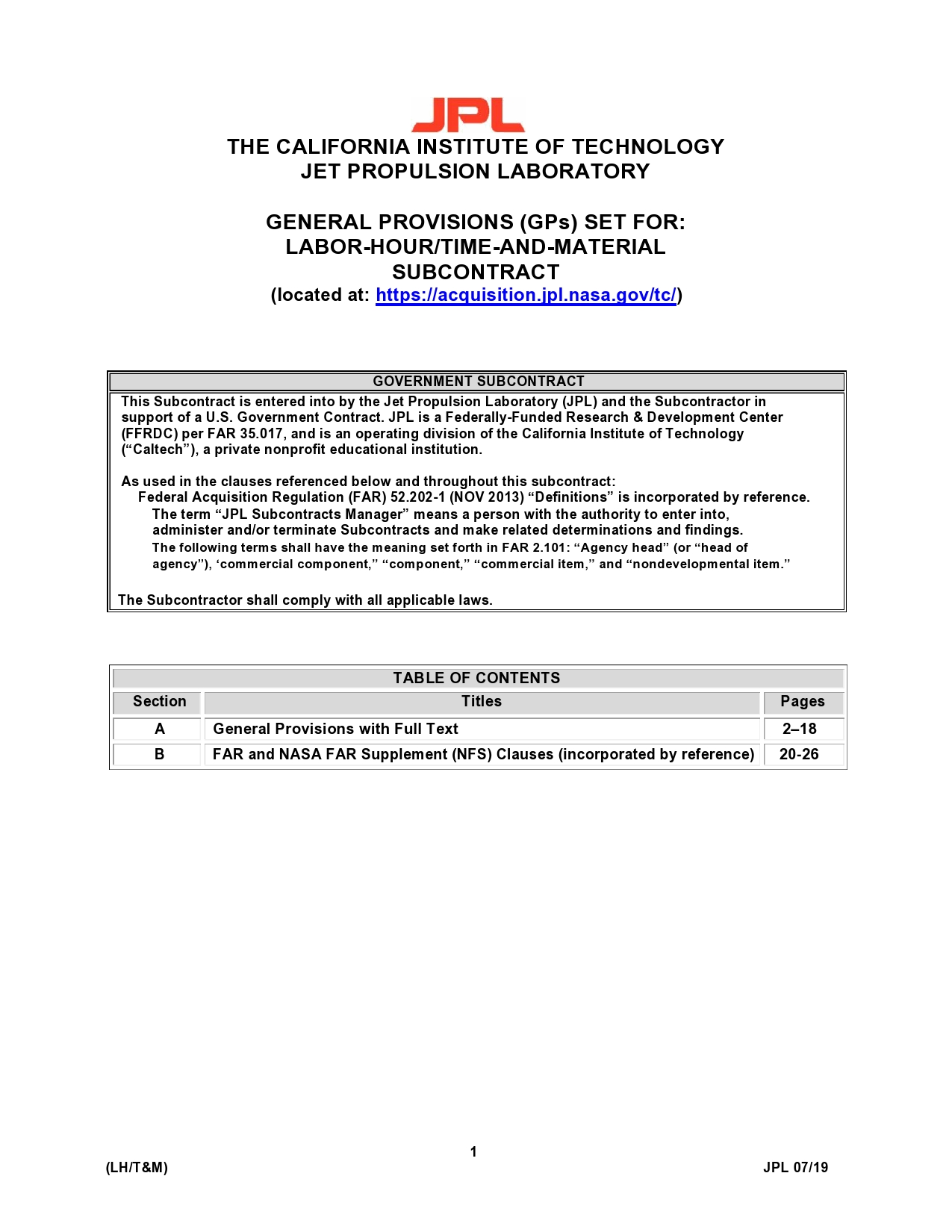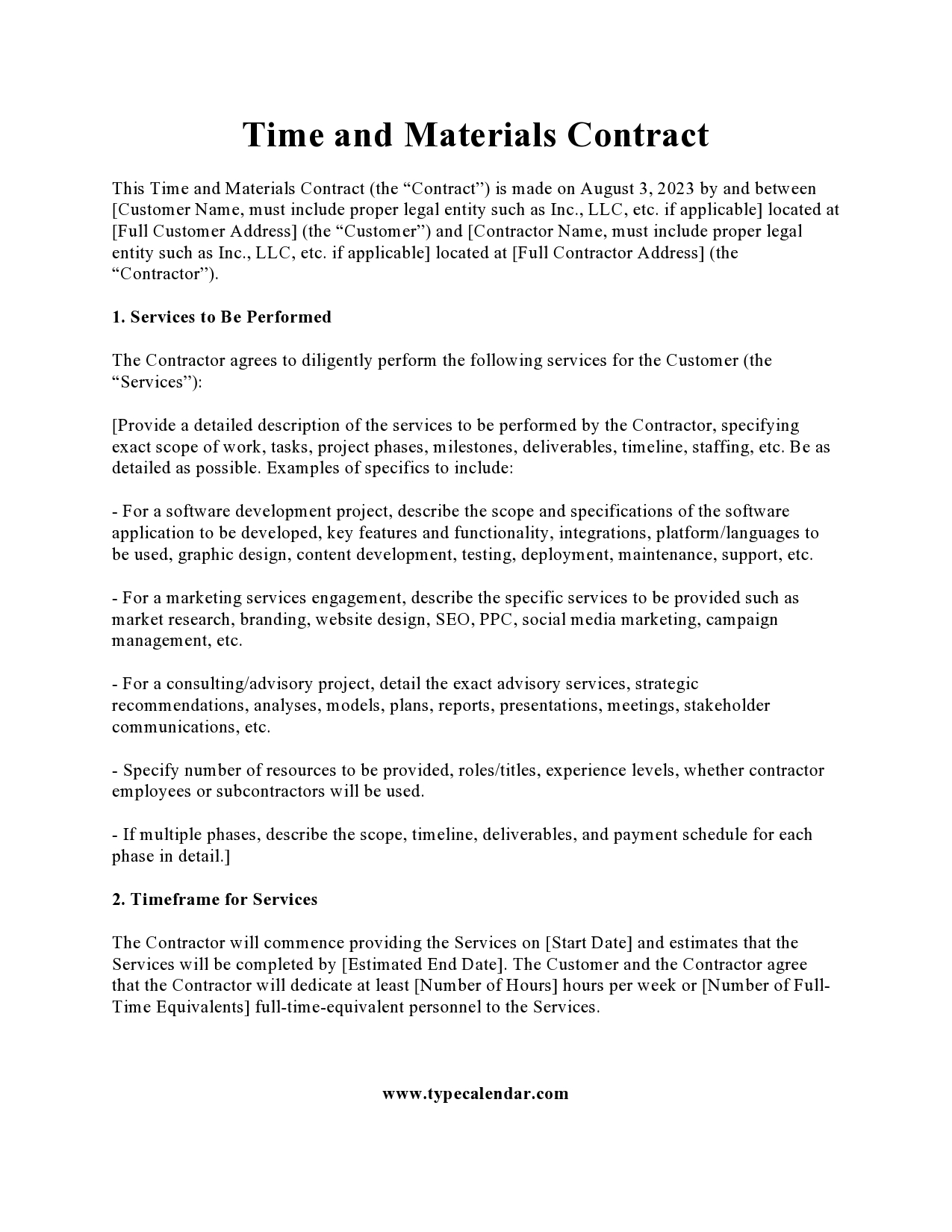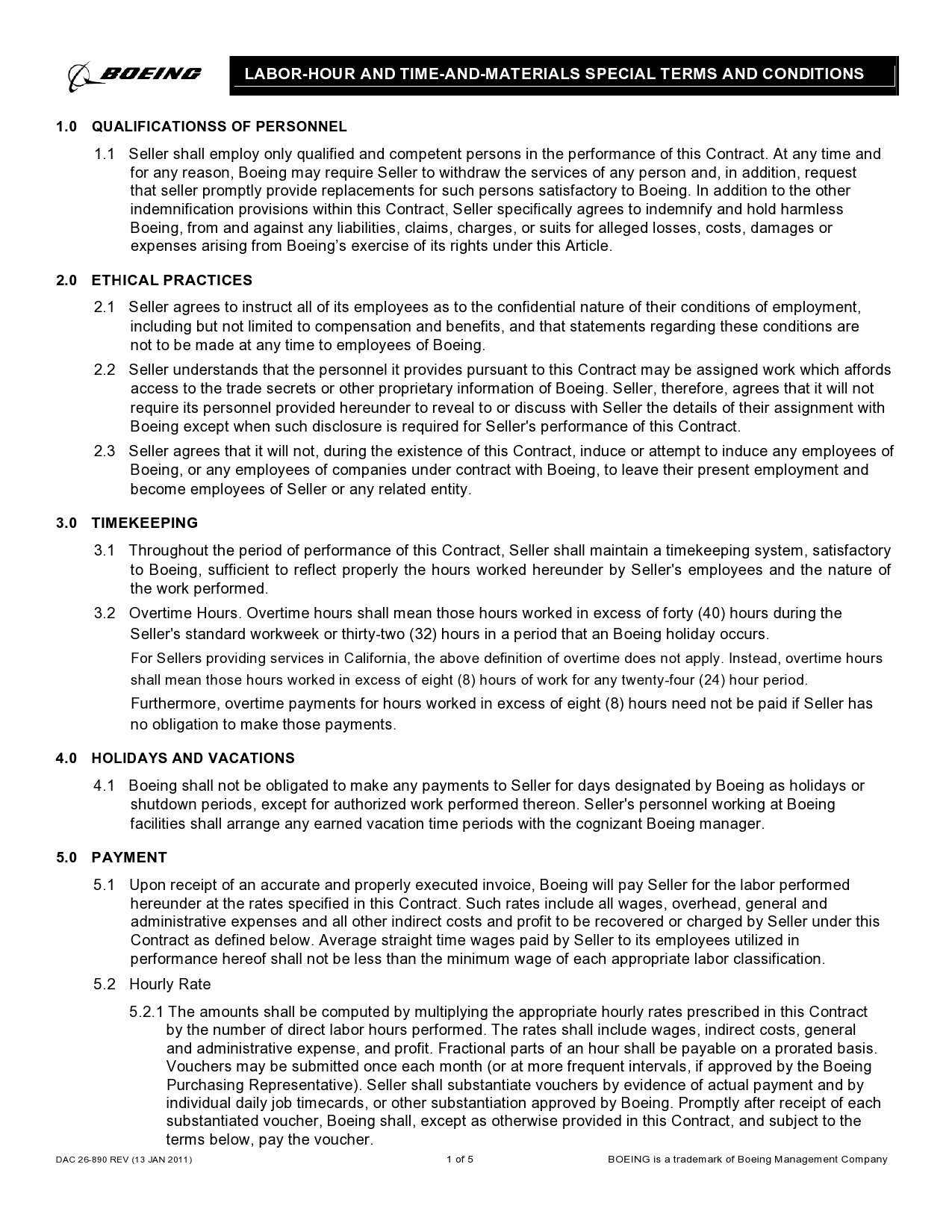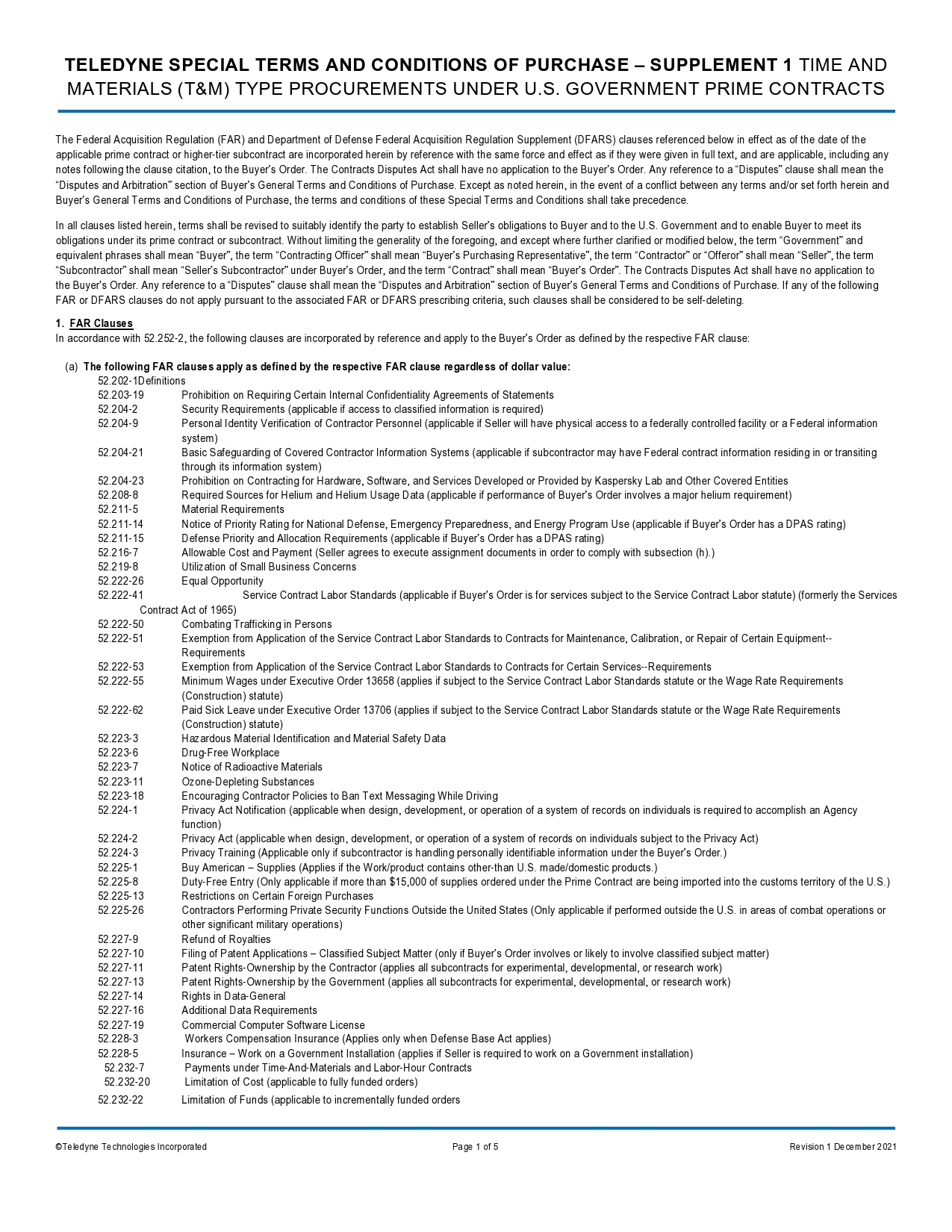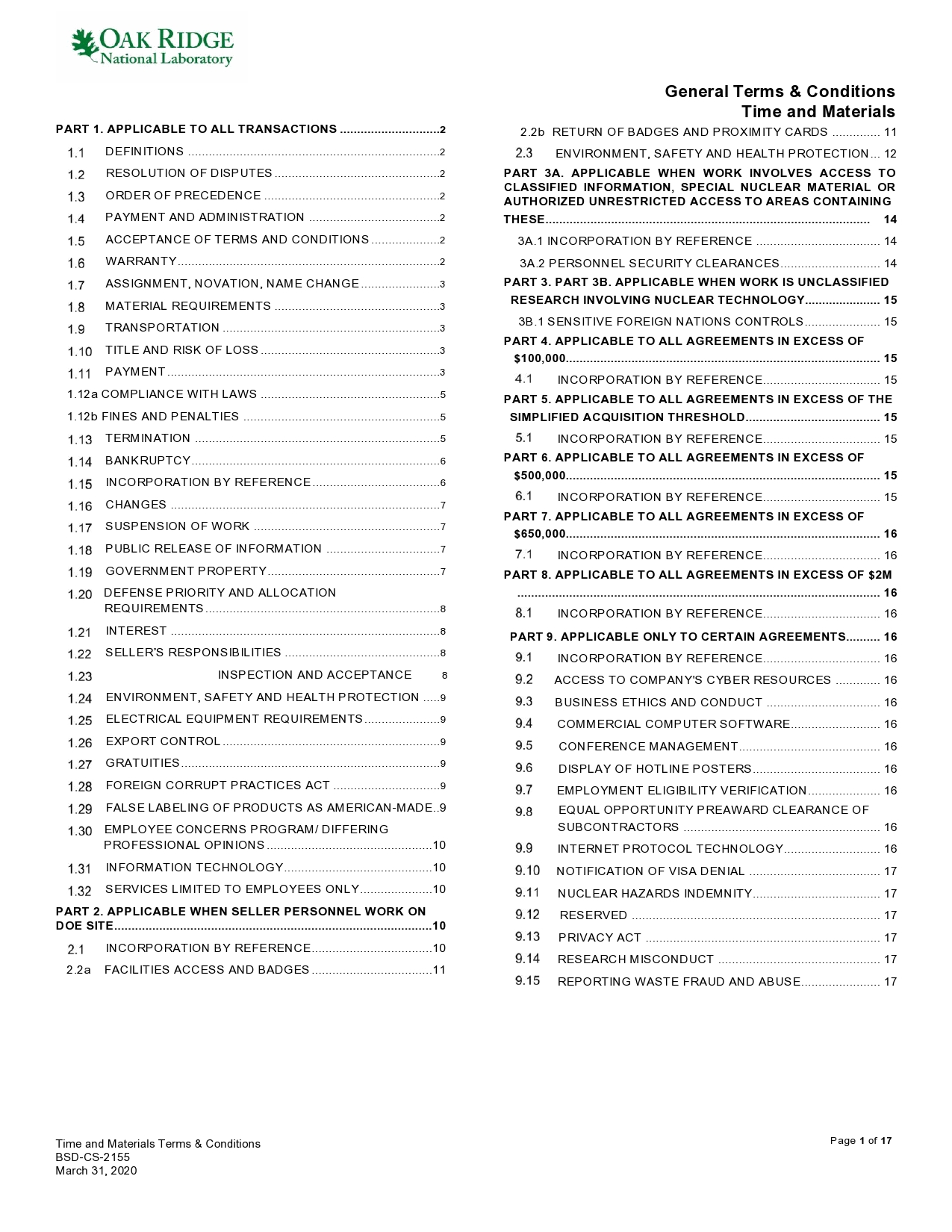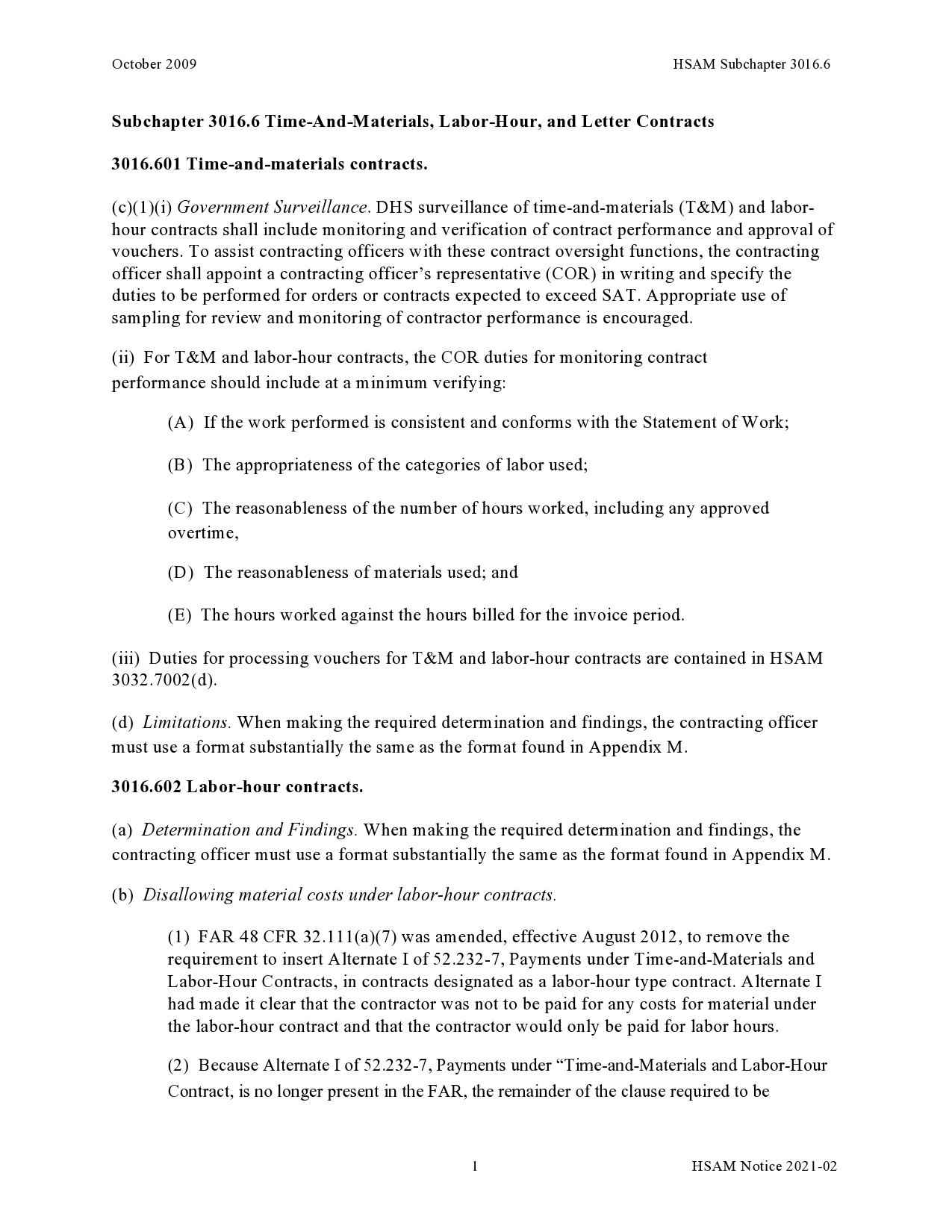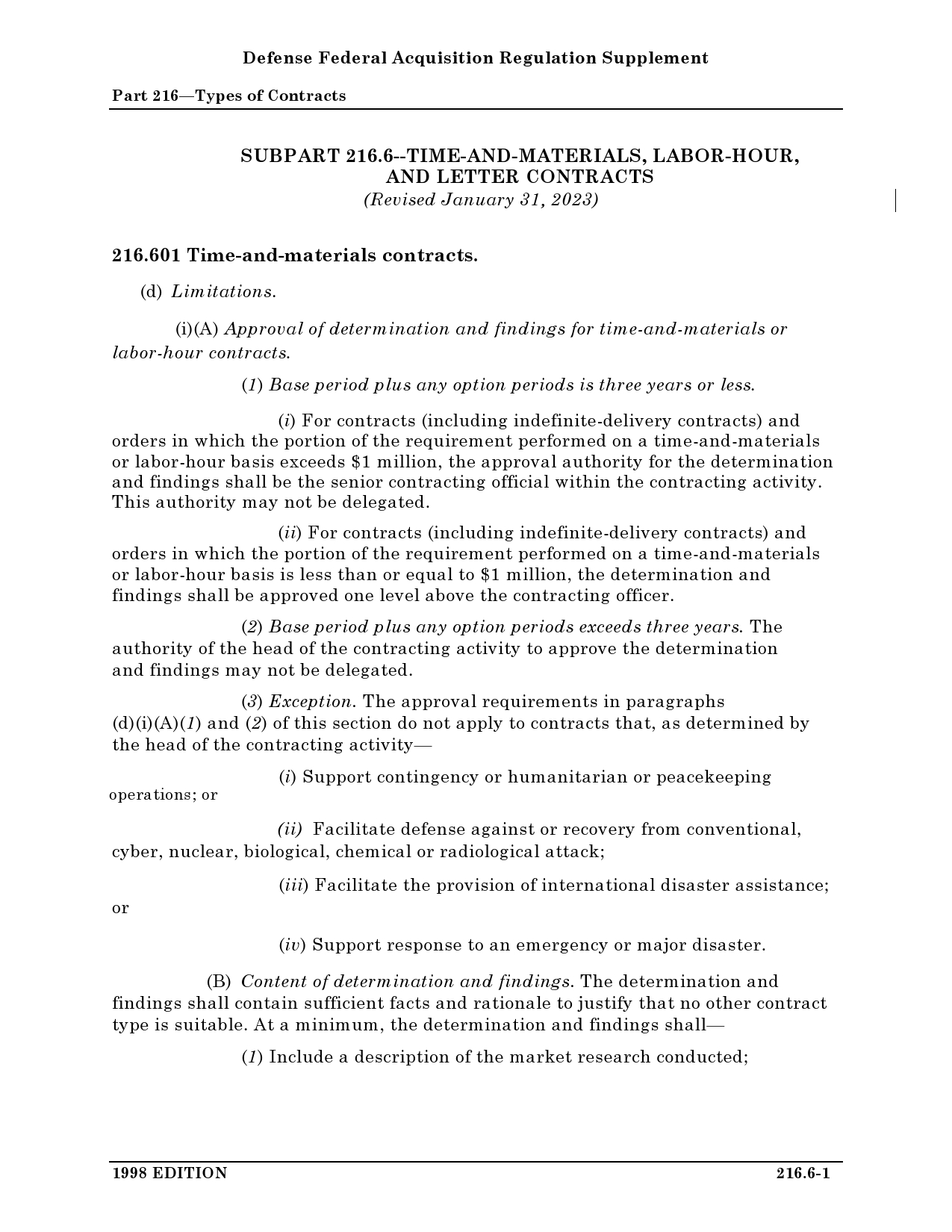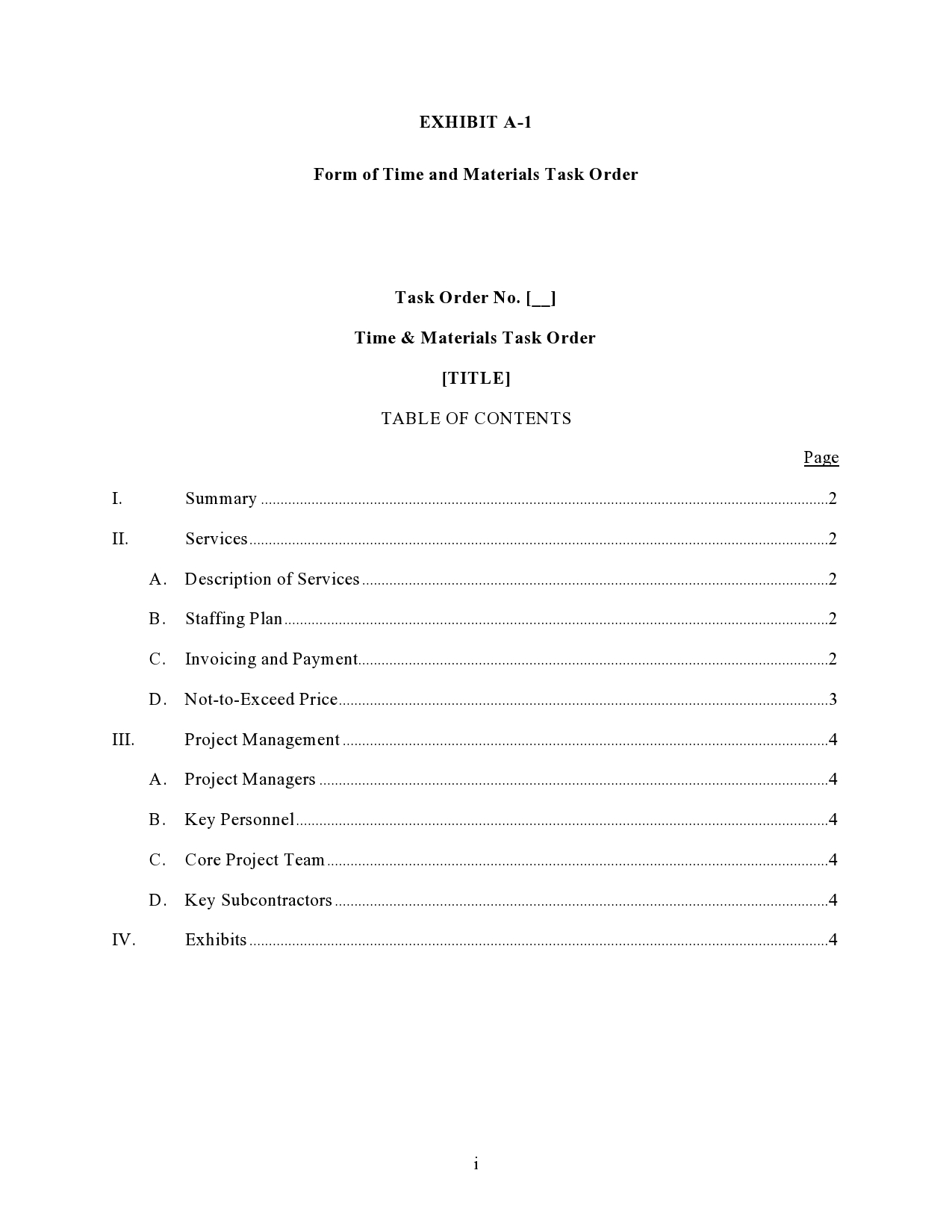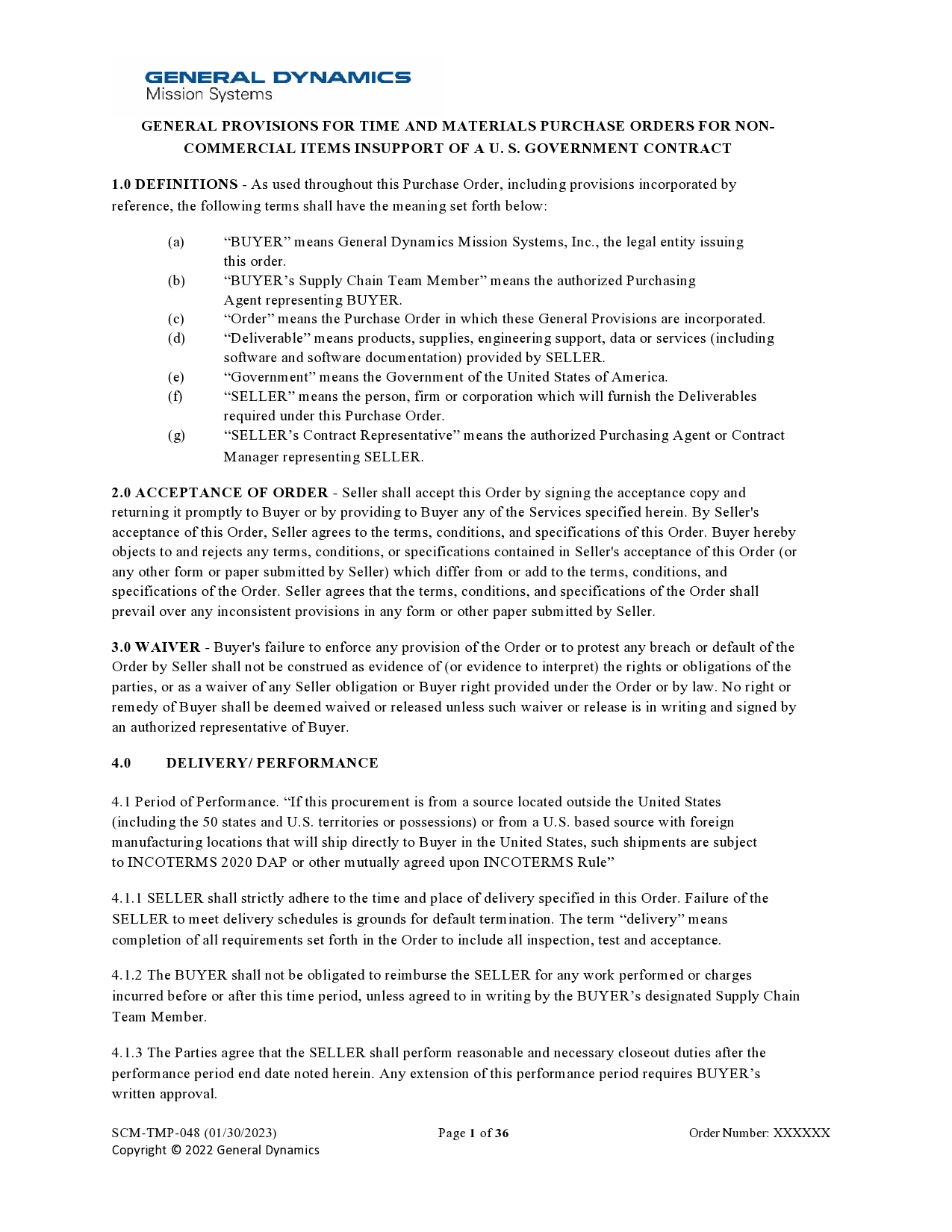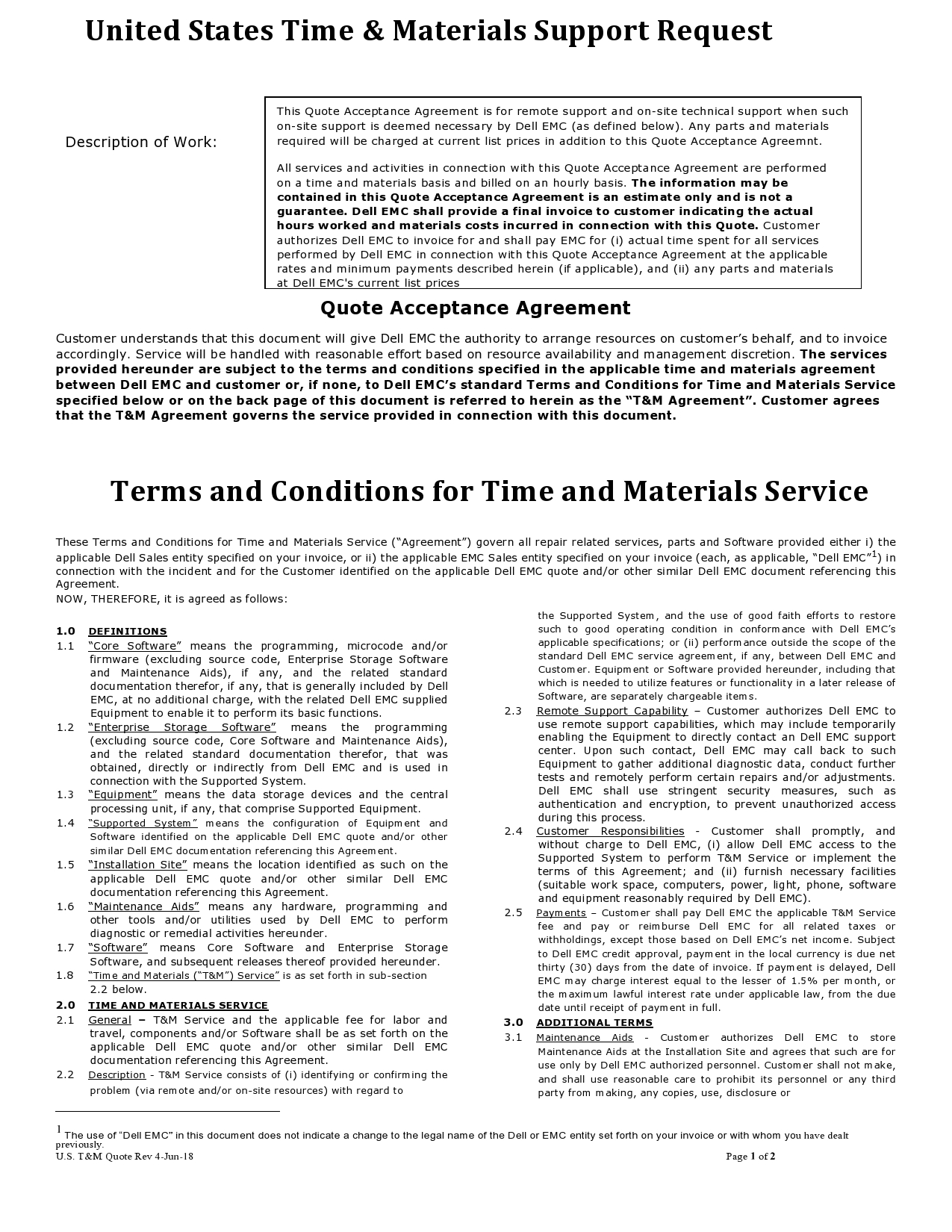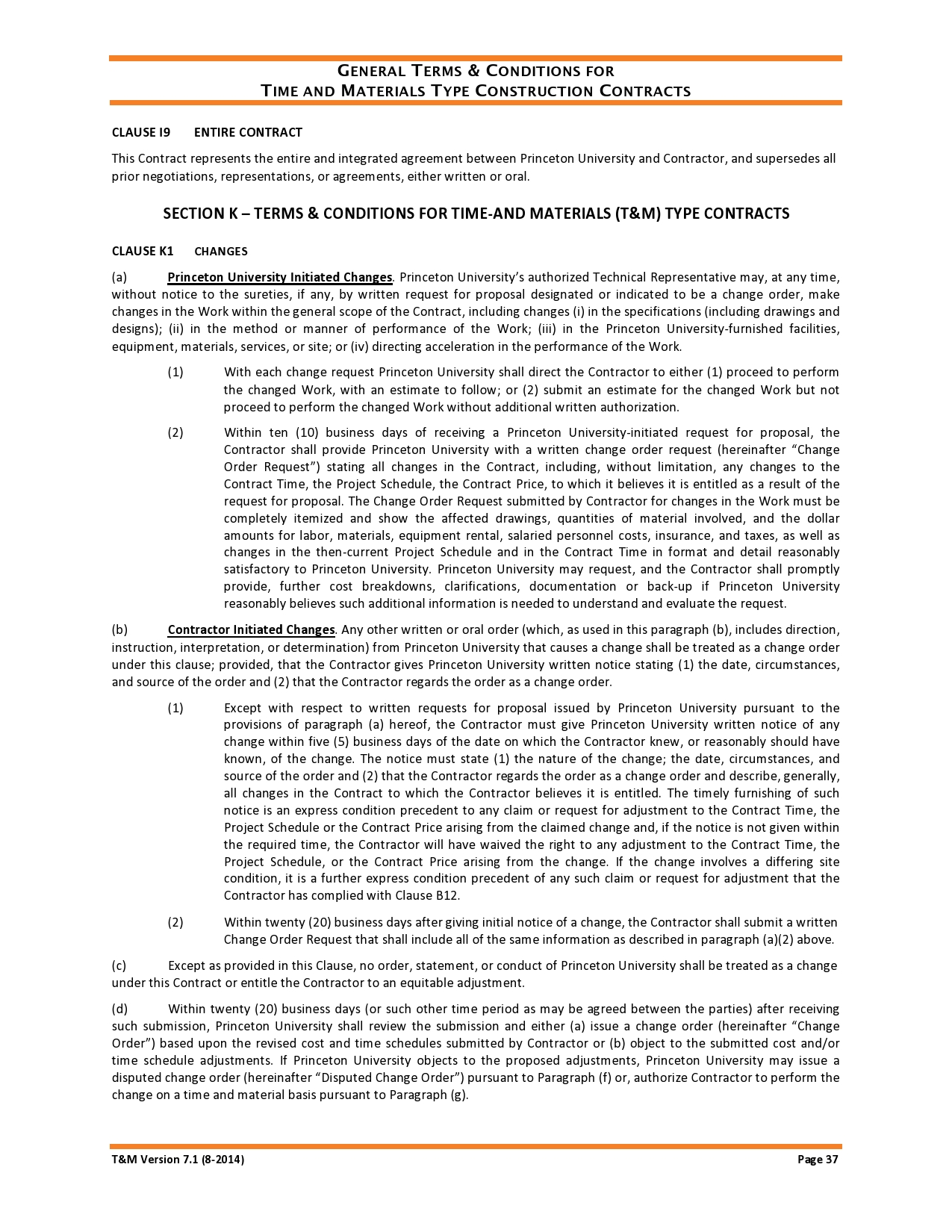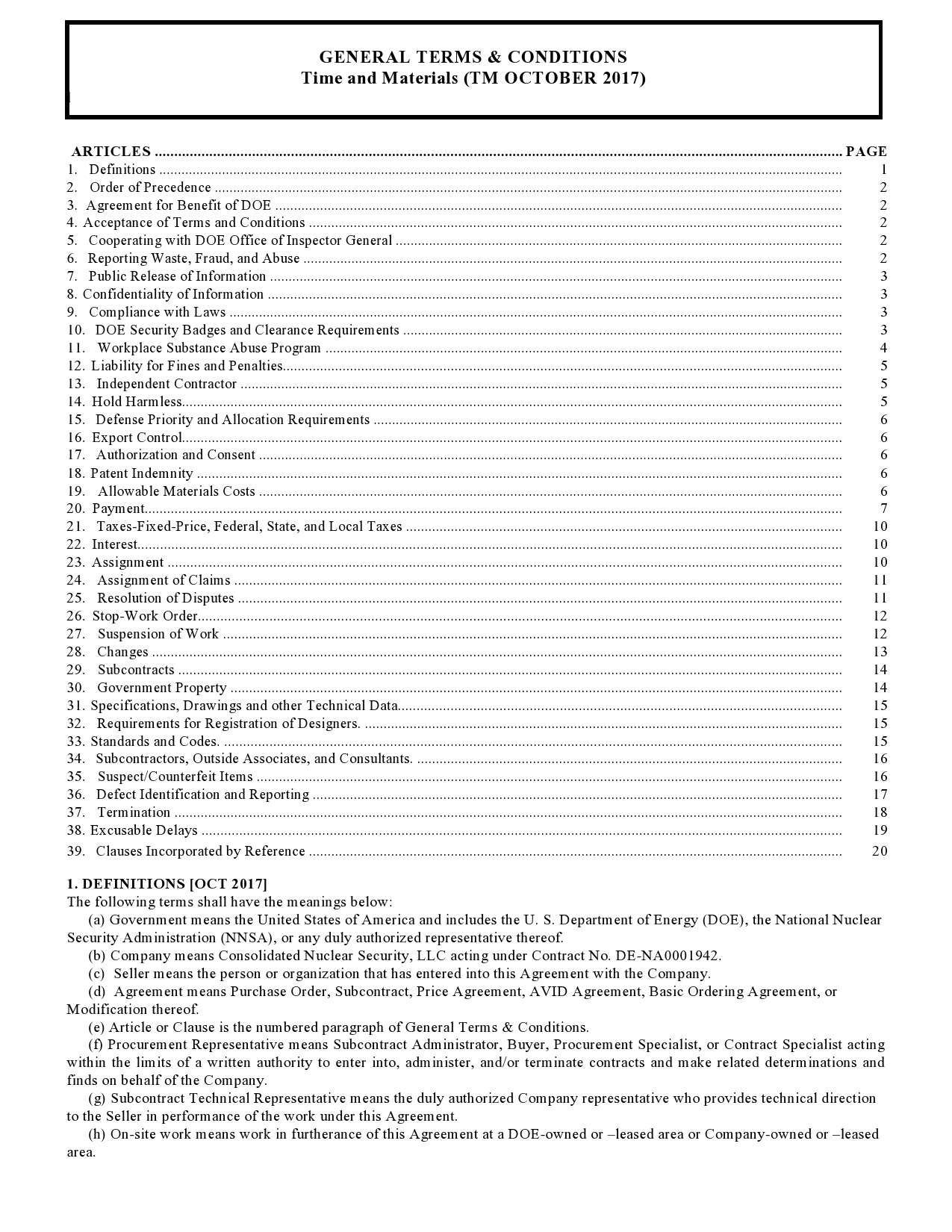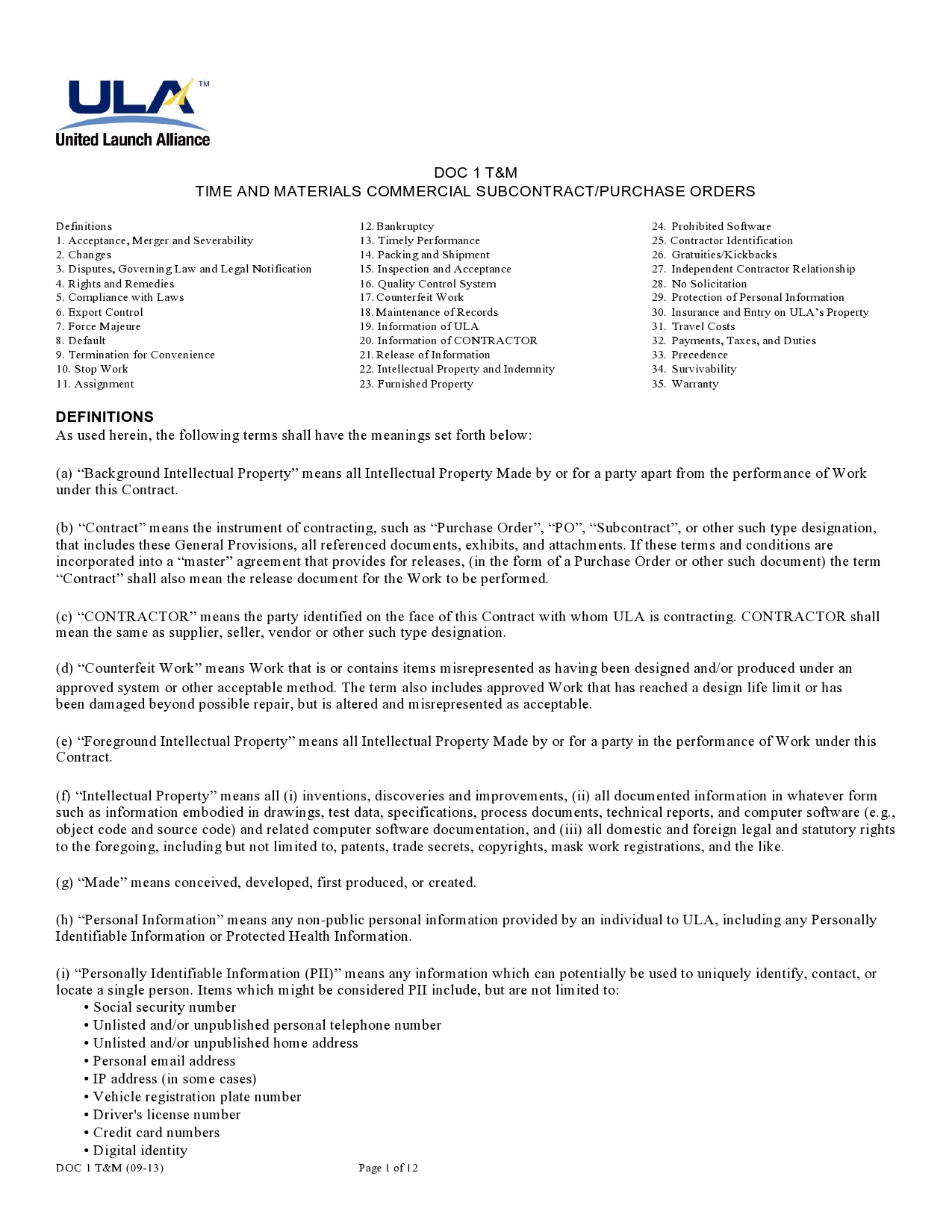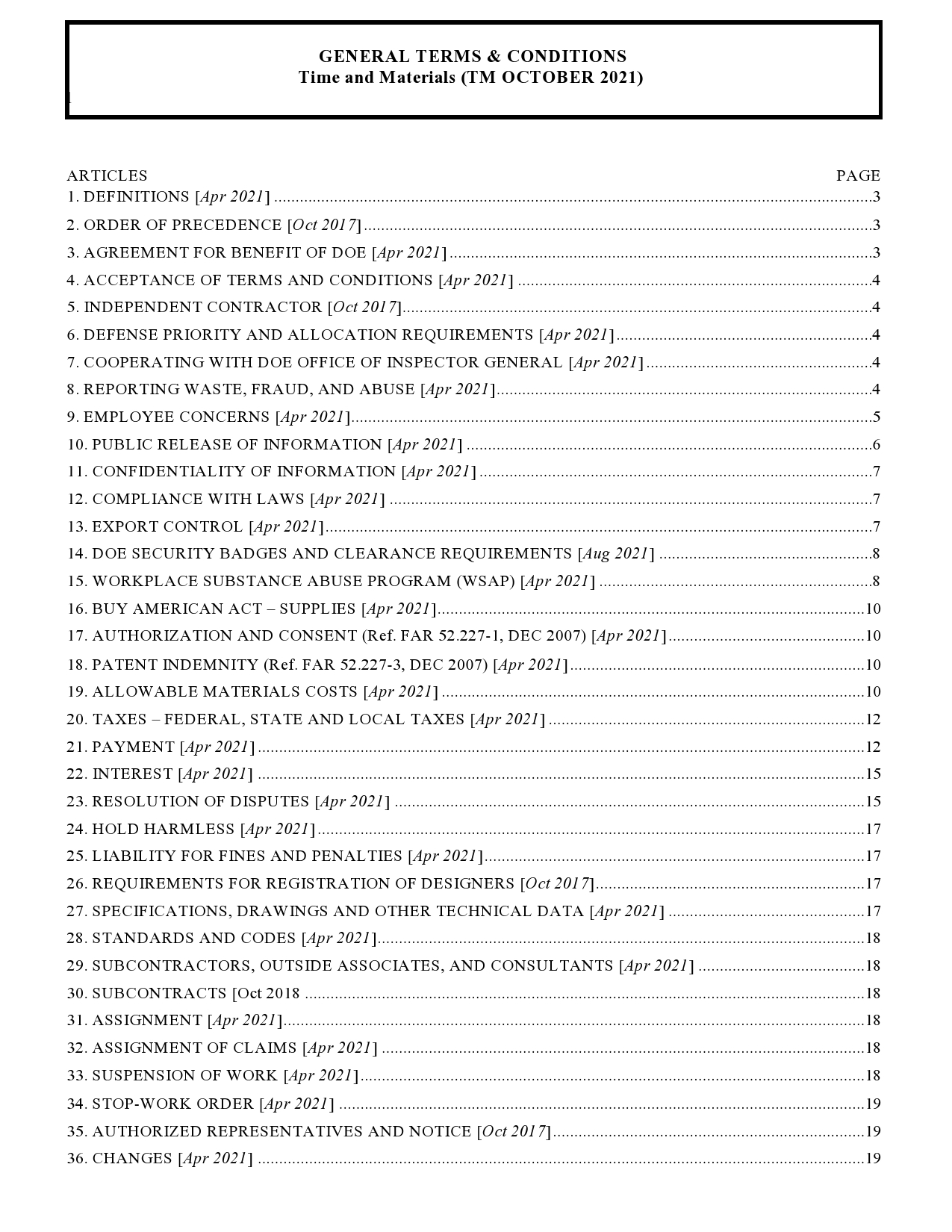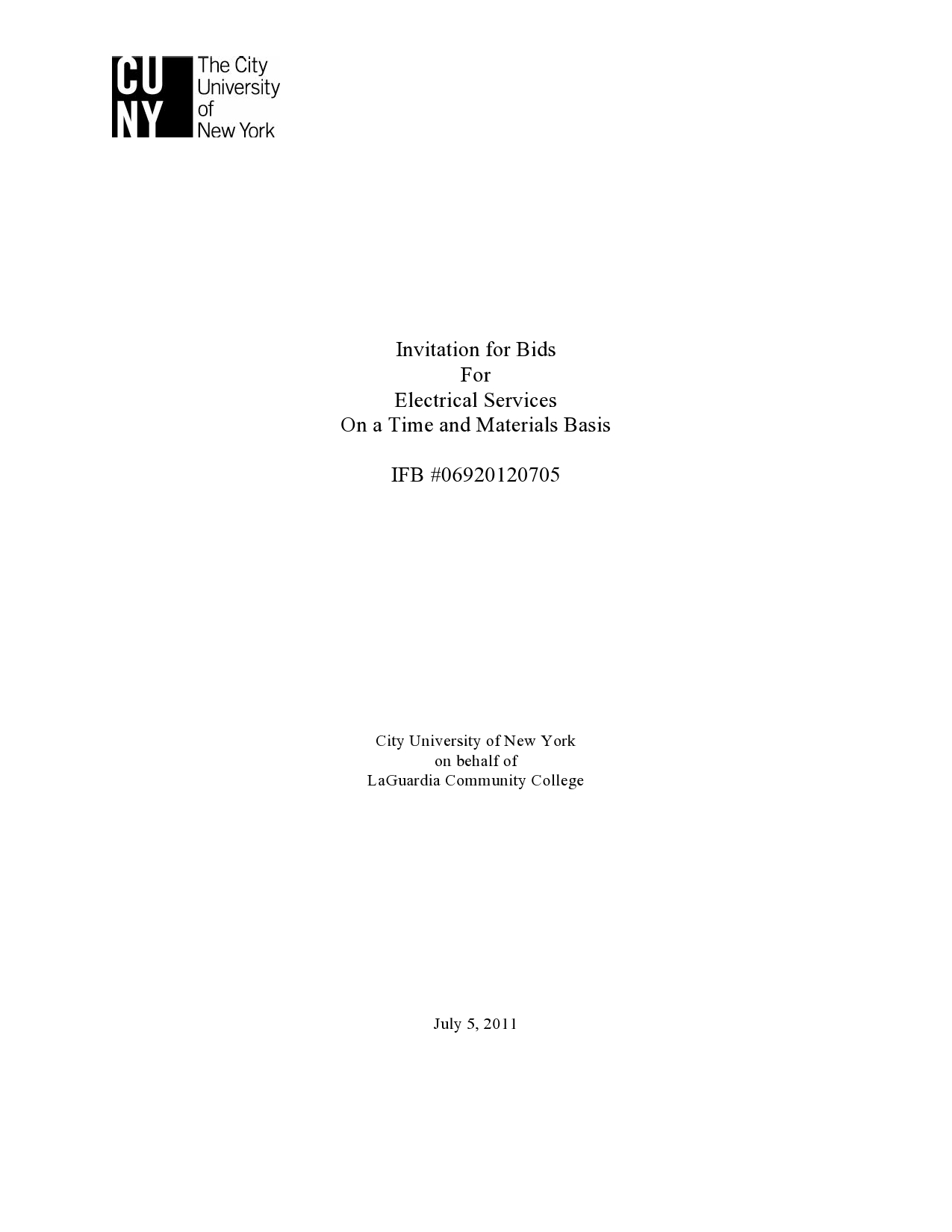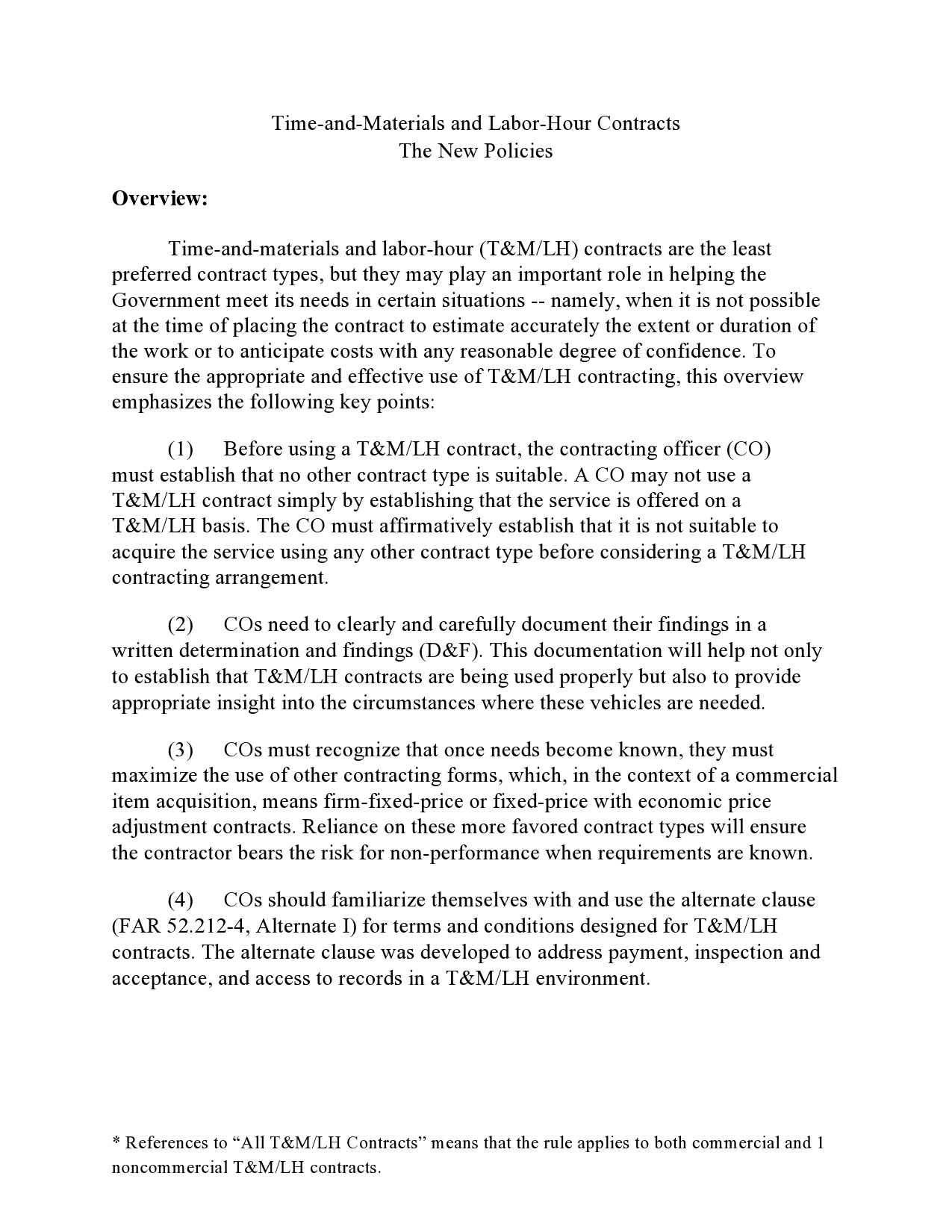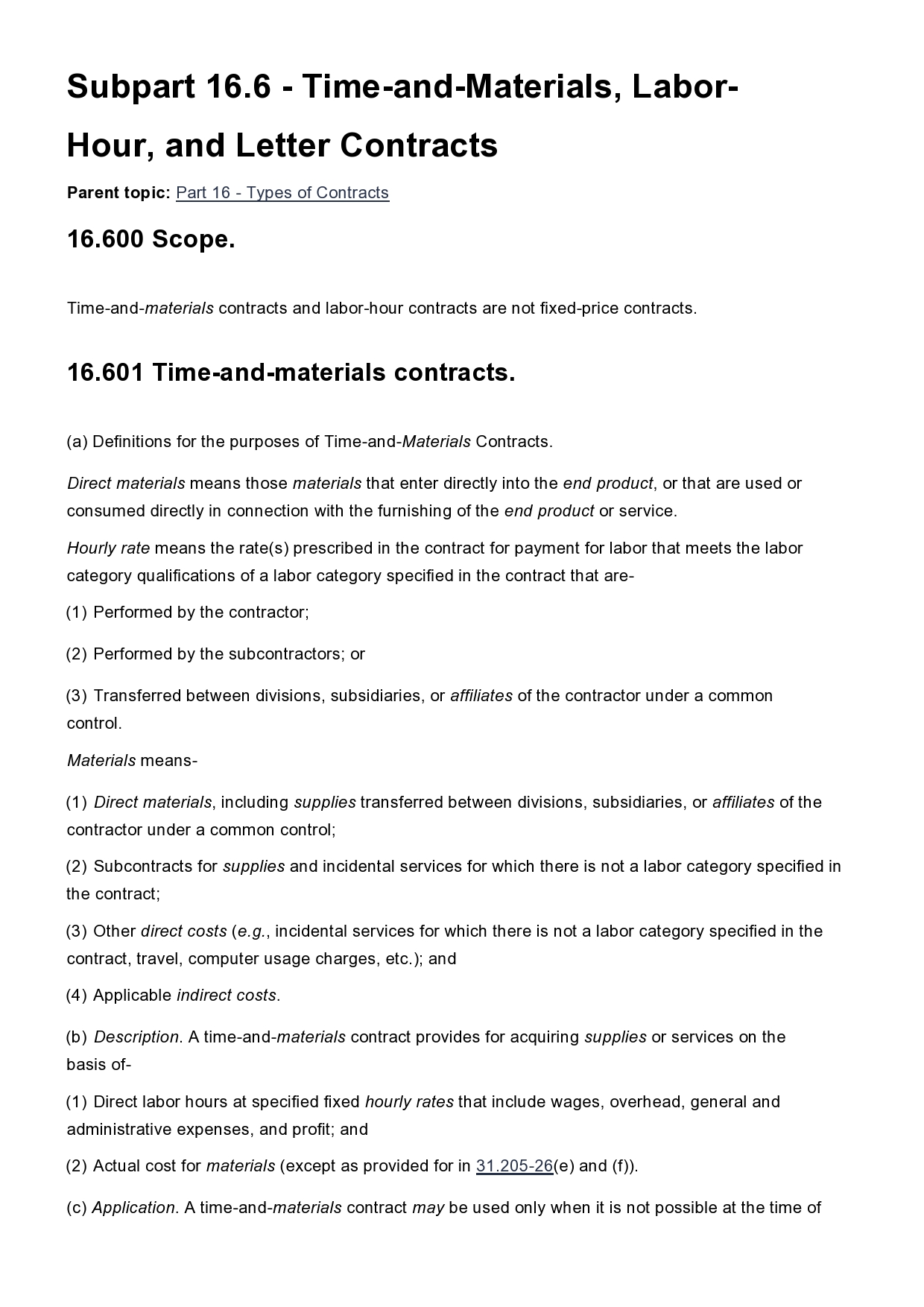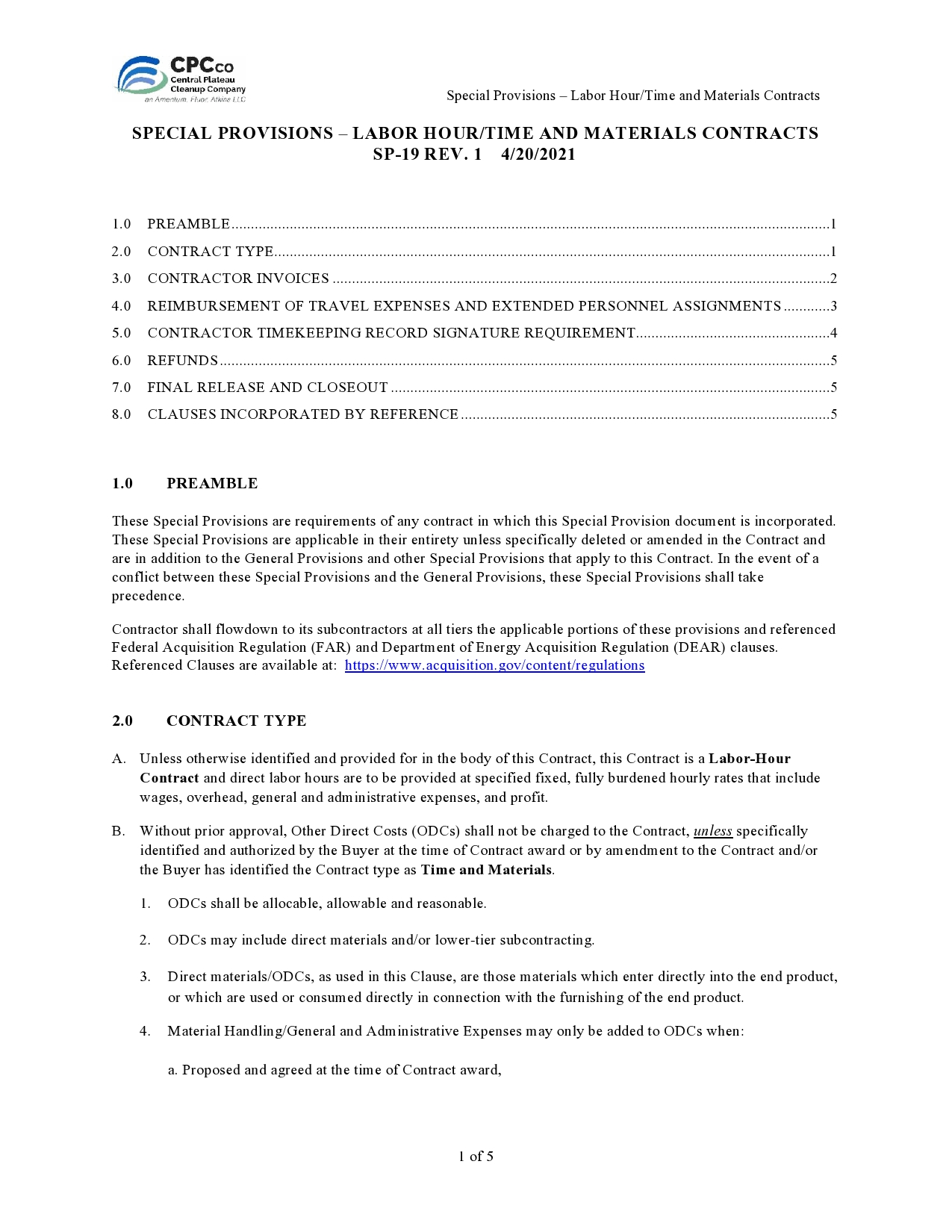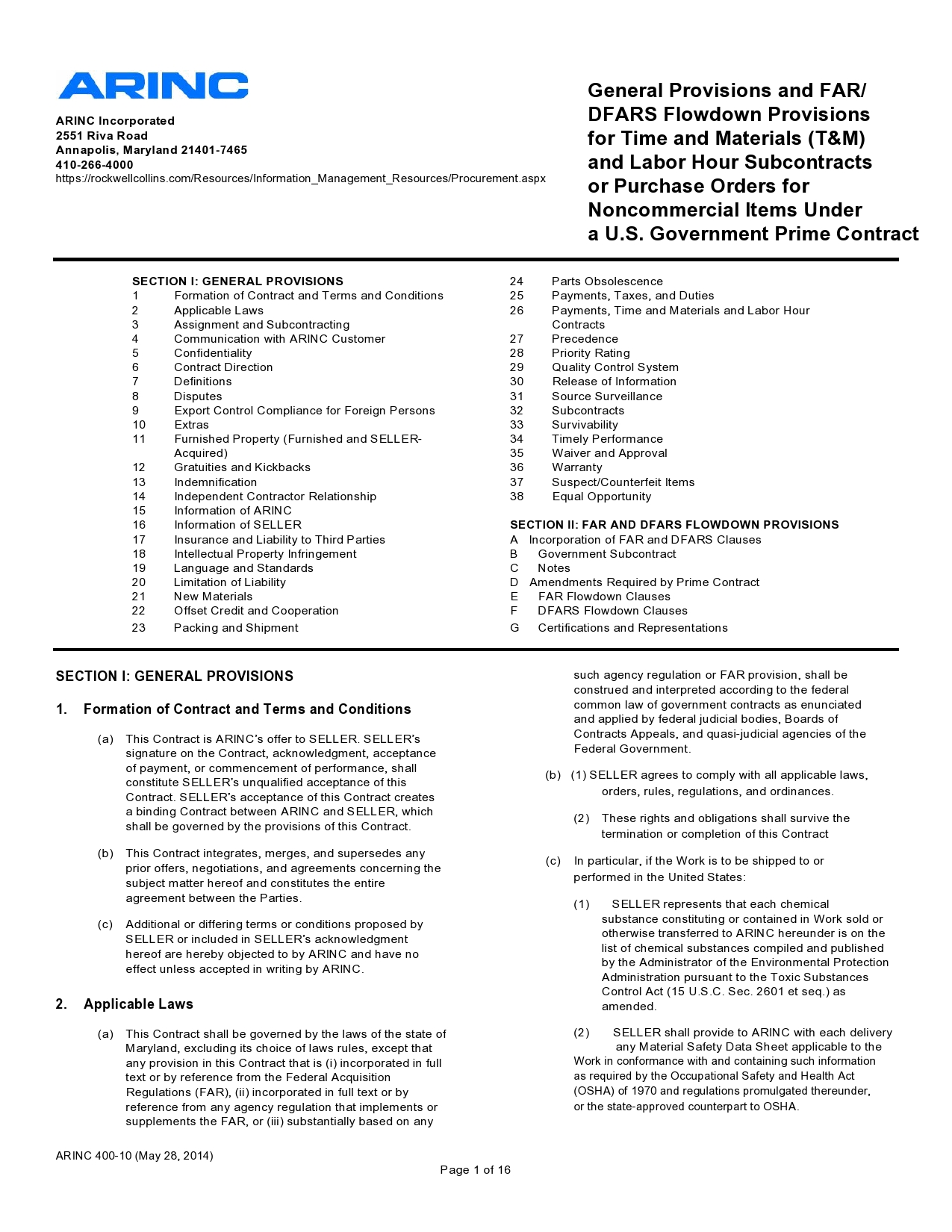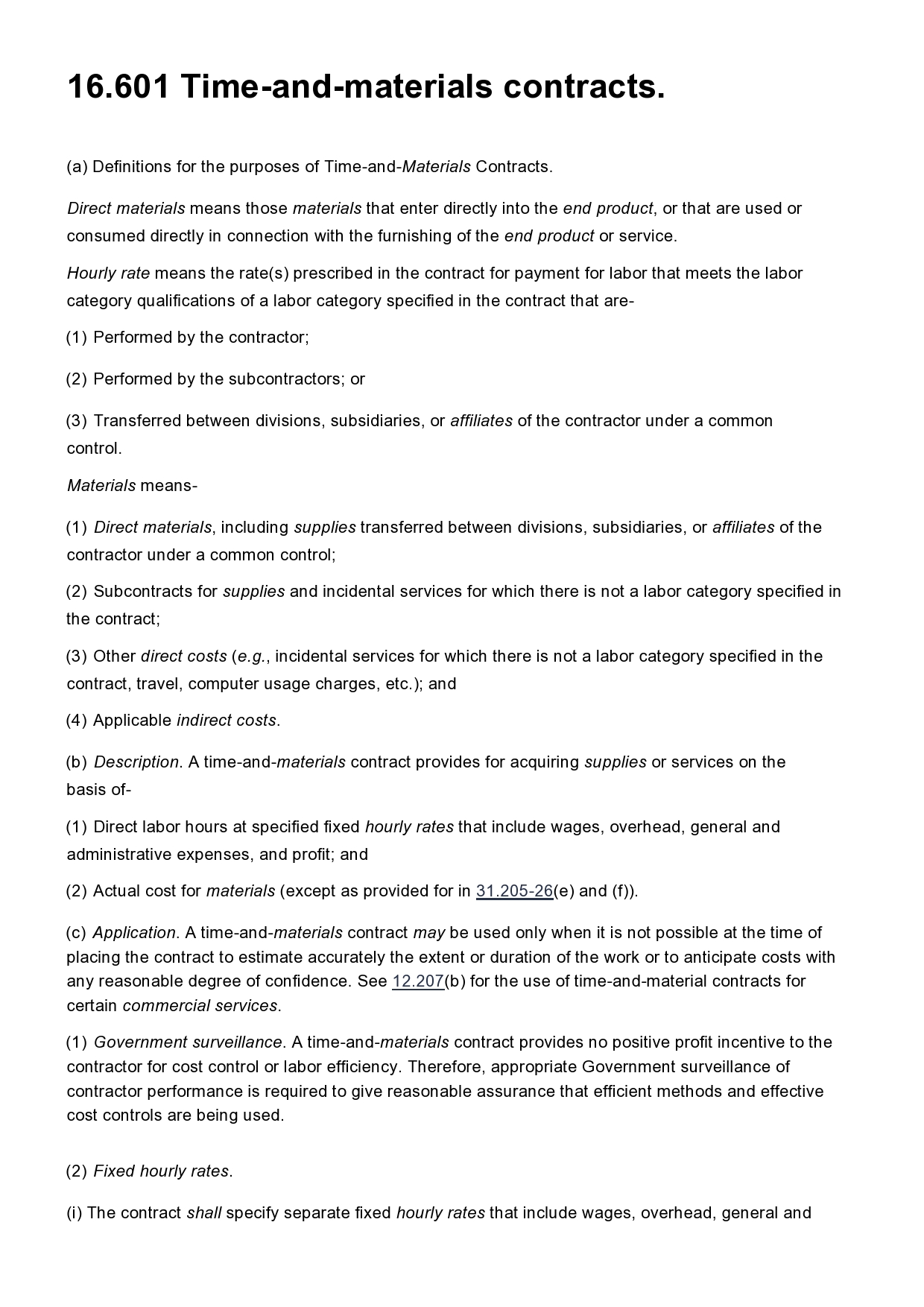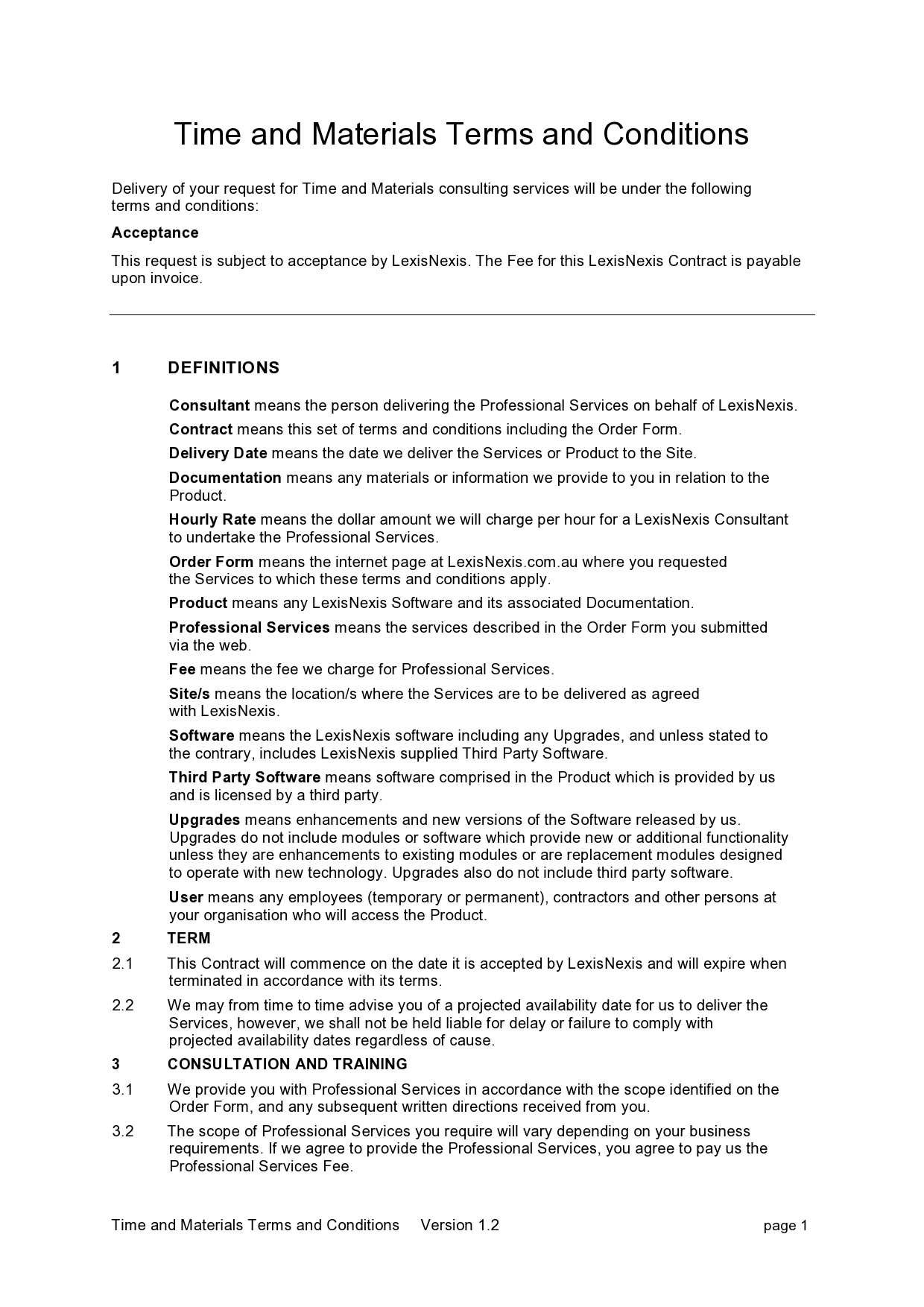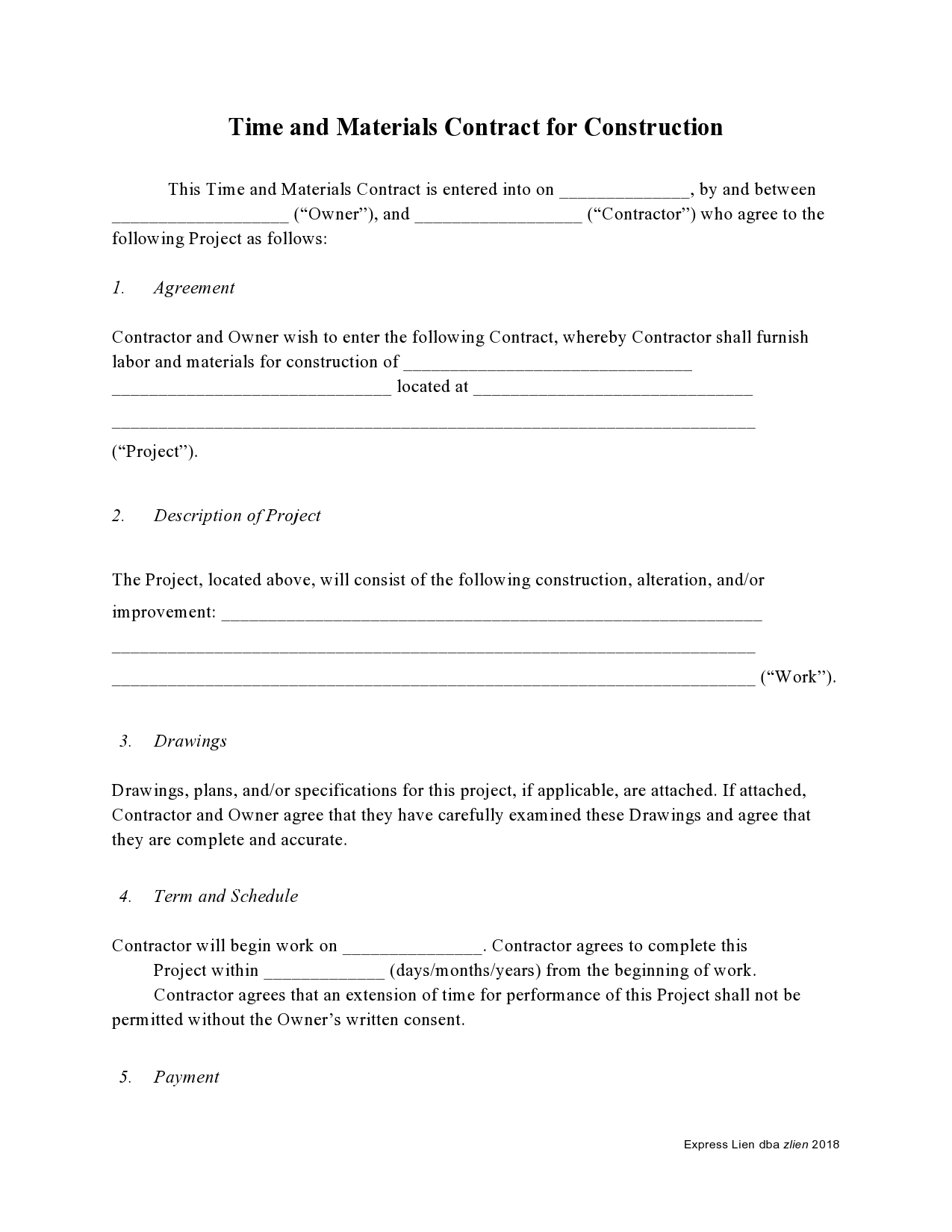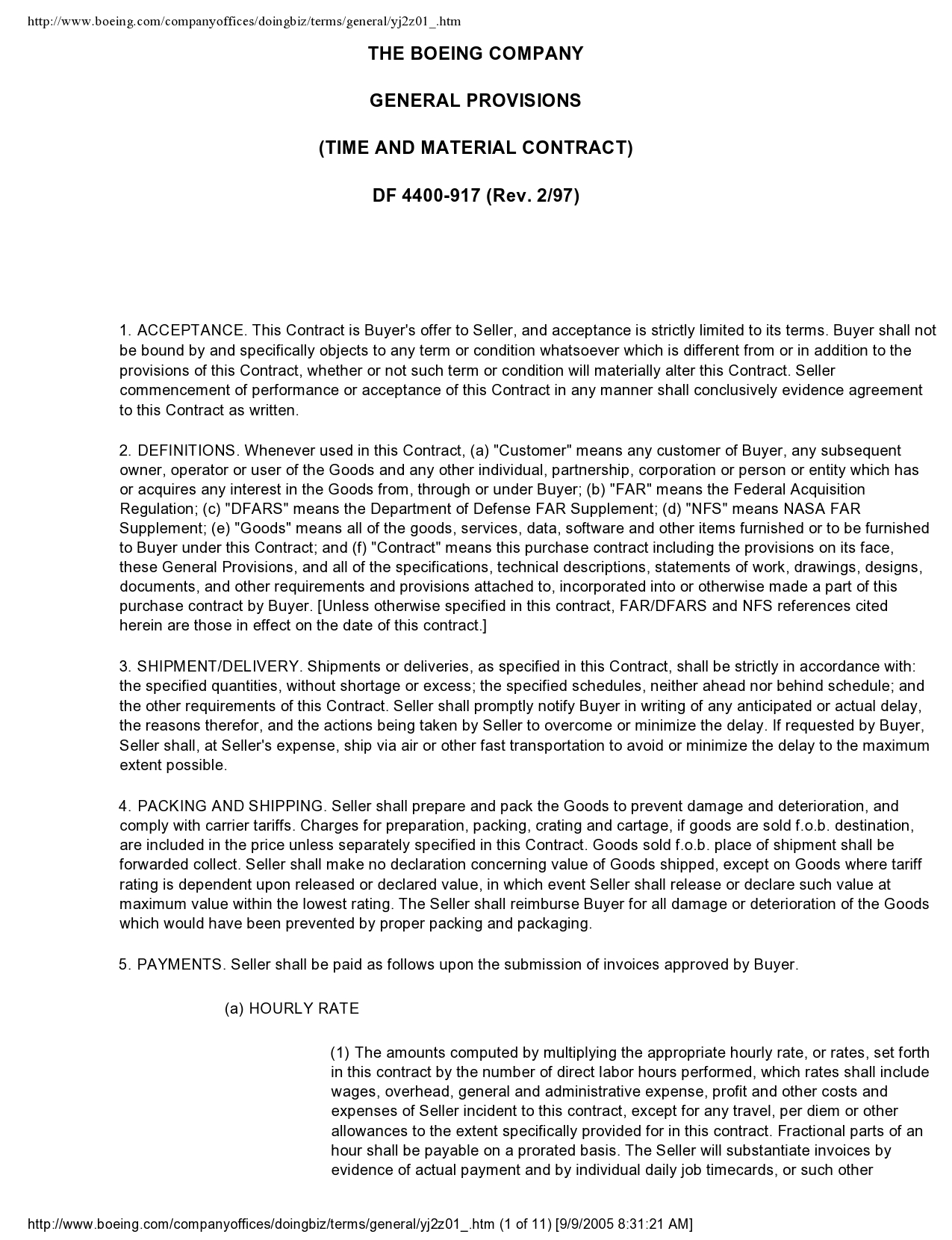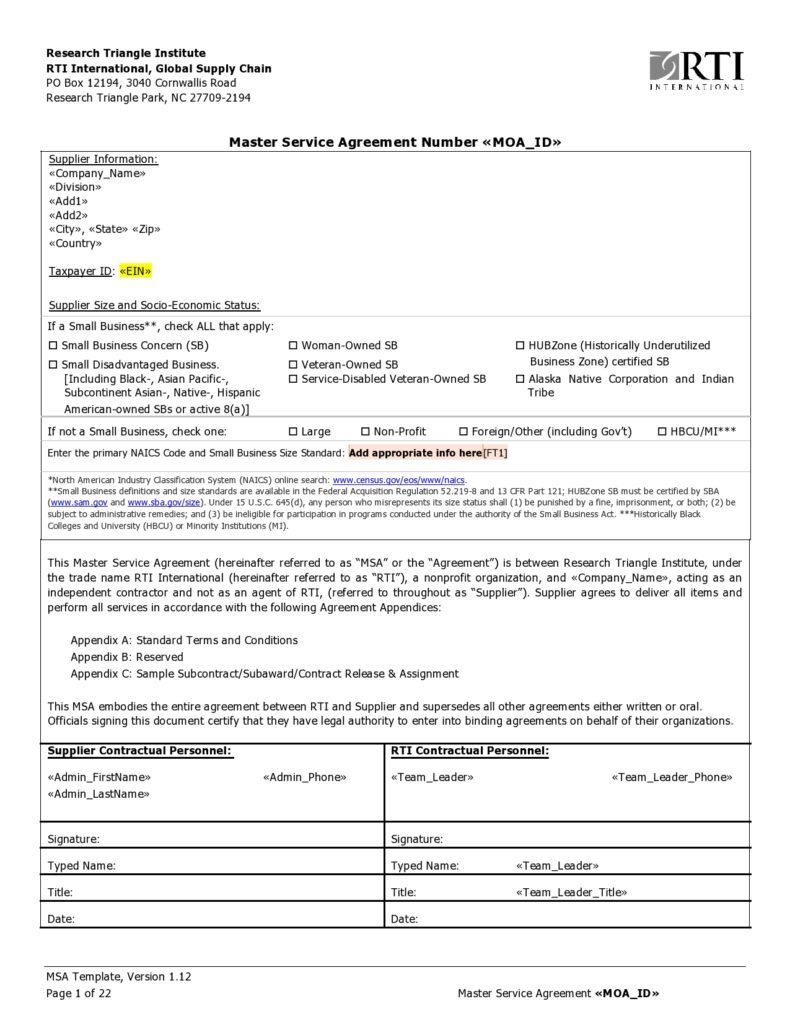Two parties may enter into different types of contracts. Time and materials (T&M) contracts can be broken down into different segments too. The parties may sign cost-plus, lump sum, unit price, or simple contracts. Mostly, the contractor or supplier agrees to source materials and do the contract. Once the project is complete, the contractor claims reimbursement of the cost of materials. They may charge the material and hourly costs of the project separately.
Table of Contents
- 1 Time and Materials Contracts
- 2 What is a time and material contract?
- 3 Time and Materials Contract Templates
- 4 What does a time and material contract offer the seller?
- 5 Time and Materials Contract Examples
- 6 What is the difference between fixed price and T&M?
- 7 Time and Materials Contract Rate Sheets
- 8 How do time and materials contracts benefit suppliers and clients?
T&Ms cover the scope of the project. They are open-ended contracts since material costs may shift at any time. The document provides an outline of how the client will pay for the materials. Some of the documents take a hybrid nature. It may in part offer a fixed material cost. On the other hand, it may offer reimbursement-based and flexible costs. They are important when clients are procuring supplies and want to adopt an hourly-based labor.
Time and Materials Contracts
What is a time and material contract?
A time and materials contract template is a fluid agreement signed between a client and a supplier/contractor. It is an adaptable document that binds the client to pay the supplier for the material supplied. The payment is determined by the current market prices.
When the contract is complete, the contractor invoices based on the total materials supplied and the total hours spent on the project. Since the document is fluid, it can be modified with time. It is a useful solution for projects that need materials whose costs may change at any time. It leaves an open window for unpredictability.
If prices suddenly change due to different reasons, the parties may come back to the table and make adjustments. The work’s complexity could be higher than expected. If that happens, the contractor may seek to adjust the time and material rate sheet. The time and material proposal includes the following elements.
- Cost of material supplied. The contractor agrees on the terms of supplies. It includes material types of the specific supply time frames. The document captures the extract material costs and how it will be reimbursed.
- Wages per hour. The time and material proposal charges hourly-based labor. The parties may agree on a fixed hourly amount or leave it flexible. It offers transparency eliminating the possibility of one party disputing about the hours worked.
- Contract management style. Every contract requires a different management style. The time and materials contract template contains the rules of the project. It directs contractors on how the contract should be done.
These types of contracts feature agreements intended to allow flexible and adaptable schedules and costs. It offers the supplier an open way to manage the project based on the unpredictable issues that may arise. They must be issues that directly affect the project costs and timeframe.
A time and materials contract example is a research and development project. Throughout the research timeframe, unexpected issues may come up. One discovery may bring an insight that had not been thought of before. If such issues emerge, it may force the entire project to take a different scope and time. Consequently, its cost would be affected.
Another time and materials contract example is a complicated innovation-based project. Innovation projects of big magnitudes may require an adaptive approach to succeed. The contracted innovators need a higher level of adaptability too. Due to this, the project may take a multifaceted approach and significantly affect cost.
Construction projects are another time and materials contract example. It might involve building a home, renovations, building bridges, and other structures. If the project is taking more than six months, for instance, material costs could change severely. Leaving the contract open offers the contractor an advantage to adjust costs.
In essence, time and materials contracts could be based on the following factors.
- Projects that bear significant cost uncertainty may require a T&M contract.
- Projects that may demand extensive scope readjustments could be ideal for a T&M agreement.
- Evolving projects with huge unpredictable features may qualify for T&M contracts.
Time and Materials Contract Templates
What does a time and material contract offer the seller?
Suppliers and contractors feel secure when they work on projects that guarantee their safety. They look at safety in terms of cushioning against losses in case material costs for the project increase. They also look at safety in terms of instances where the project time frame extends beyond what was expected.
Project extensions could mean spending more on human resources. It could mean paying more for equipment and spending more on materials. A time and materials contract template gives suppliers and contractors a safe room. It enhances safety in the areas of:
- Funds
- Pricing
- Flexibility
- Adaptability
- Transparency
- Equitable pay
The contract promotes a collaborative space if unexpected difficulties arise. Due to the friendly characteristics they offer, a time and materials contract template is a wise offer for suppliers. It allows them to manage risks that may come without stress or financial pressure. The contract offers them the following and more.
- Room for adaptability. It is common for some types of businesses to encounter problems. If such instances arise, a supplier needs to be allowed room for adaptability.
- Fair ground for compensation. Some contracts offer fixed hourly rates. When a supplier signs such a contract, they limit the possibility of hiring experienced professionals. When the rate is open, the supplier may hire different experts requiring different hourly pay.
- Money security. Sellers do not lose money if work hours are extended. They get compensated if material costs increase.
- Enhances collaboration. Time and materials contracts open space for transparency and communication. This allows enhanced collaboration between the parties.
- Allows flexible costs. Project needs may suddenly change requiring adjustments. The time and material rate sheet offers room for adjustments.
- Allows continuity. Projects may stall due to unpredicted issues. With time and material rate sheet, projects move on even if such issues occur.
Time and Materials Contract Examples
What is the difference between fixed price and T&M?
The main difference between fixed price and time and materials contracts is the features they offer. A time and material proposal leaves room for flexibility and openness.
Sellers get a leeway for adjustable use of resources. Fixed price contracts are different and tend to be rigid. They offer stable agreements without room for adjustment. The contract offers specified prices that a supplier must work with.
Both options can be good but suppliers need to be careful when deciding which one to take. They may judge their options based on details such as characteristics of the project and its capacity for change. They may also base it on the degree of cooperation needed.
When it comes to signing the project’s paperwork, knowing the difference between T&M and fixed price is essential. Suppliers need to weigh both options with keenness and choose the best. Both options contain several similarities but here are their distinctions.
- Monitoring and evaluation – fixed price contract vs time and materials contracts
At a fixed price, contractors are required to complete the project within the timelines or set labor hours. Here, one cannot exceed maximum labor hours without a valid reason. Evaluations are done based on the milestones set at the beginning of the project. A time and material proposal is different. It is monitored and evaluated based on time and money spent on the project. It measures what has been done and monitoring goes on throughout the project phases. This type of monitoring allows changes to be made as new developments come. - Scope and adjustments
In fixed price, its scope is rigid and follows the items listed in the contract. Need for adjustments may require negotiating an entirely new contract. Adjustments made without an agreement could lead to court cases. It could attract penalties and project cancellation. In time and material contracts, the changing scope of the project is allowed. Any adjustments may not impact the project. - Collaborative approach
Fixed price is not friendly to collaboration. That means the client stays away from the project. They do not influence what happens daily on the project. The project strictly runs on what was initially agreed upon and signed.
T&M gives room for the clients to engage with the daily running of the project. They have a right to know how the budget is spent. They may influence adjustments of the timeframe. Depending on the information they receive, they have the power to renegotiate the terms and make changes. - Price changes
Fixed price offers a known project cost. The contractor must work within that budget all through. The agreed cost does not change even if the project running cost changes. T&M allows flexible costs. The final project cost is defined in the agreement. The parties work with a tentative cost that is prone to change. The actual hours worked and the actual budget is calculated at the end of the project. - Risk management and project security
Fixed prices tend to offer limited or no project security. If the costs change due to unforeseen issues, the contractor bears the extra cost. The entire contract runs on a fixed price. T&M contracts allow risk sharing in case the project experiences cost fluctuations. - Complexities of projects
Fixed price is best suited for less complex projects. It works better for contracts with a predictable future. T&M contracts fit best for complex projects full of uncertainties. - What does a T&M contract include?
It is important to know what a time and material rate sheet should include before signing it. Ensuring that every required detail is included protects the contractor from legal issues that may arise. The contract should include the following main points. - It should define the scope of the project
The scope includes things that need to be delivered. Scope defines the tasks of the project and its goals. It may capture the expected timeframes. - Payments
T&M contracts are paid on an hourly basis. Hourly payments differ depending on the skill level and work complexity. The contract should offer a detailed description of the different hourly payments. - Billing guidelines
Billing might be done after every project phase. The parties should agree on the billing phases. - Material costs
The agreement must define the material types and quantities. It should cover the costs of each category. - Availability of records
There should be a detailed description of how records will be kept. The client should know details such as which materials were used. They must know how many hours were spent on the project and the costs. - Payment terms
The contact should explain how payments will be made including the accounts. - Project adjustments
If a need for adjustments arises, there should be guidelines for implementing them. Although the project allows adjustments, the contractor should not be given an open page. There should be limitations to time and cost extensions. - Contract breaches
The contract captures information about breaking the rules. If one party breaks the guidelines, they should meet the damages. It is important to consider the law and the directions it gives concerning breaches.
Time and Materials Contract Rate Sheets
How do time and materials contracts benefit suppliers and clients?
A T&M contract is flexible and offers both parties a variety of benefits. It is important to understand the benefits to decide whether the contract is a good fit. Suppliers need to weigh the benefits to help them decide on signing the contract. Here are the important benefits to consider.
- The contract focuses on quality instead of timeliness. Sometimes it may be extended to add features that will make the customer feel satisfied.
- Contractors do not have to incur full risks because they can share it with the clients.
- The project works under a flexible scope allowing for adjustments whenever necessary.
- The contract allows scalability which leaves room for smooth management of rising issues.
It is easy to create a contract from scratch. The parties just need to understand the components to include. Once they do, capturing the finer details is easy. The parties may agree to use a pre-populated template. This makes the work much easier and they could complete it in a matter of minutes. A time and material rate sheet works beyond a formal agreement.
It creates an environment of collaboration between a client and supplier. The contract incorporates openness and agility. It gives suppliers the flexibility to make changes without interrupting the project.
Clients benefit from flexible payment terms. It allows them to make inputs into the project in every phase. The contract offers room for a mutual collaboration that guides the parties through unpredictable processes.

